PUBLICATIONS
Publication Portfolio
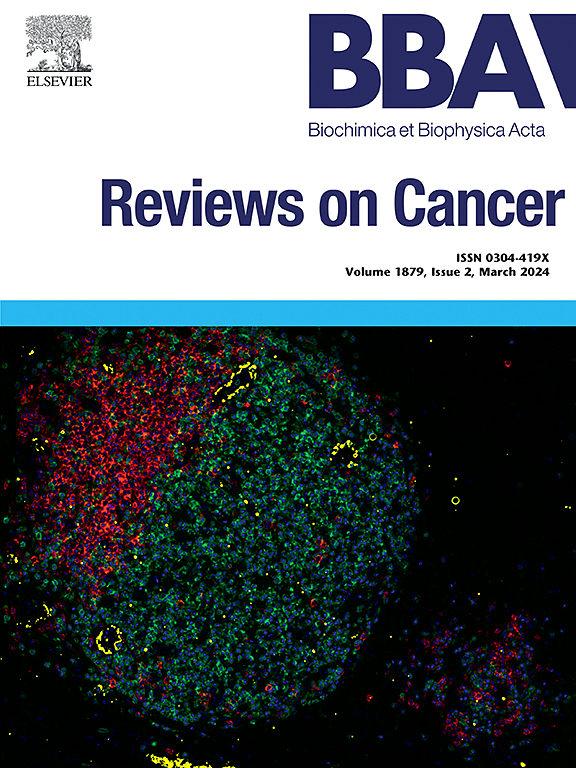
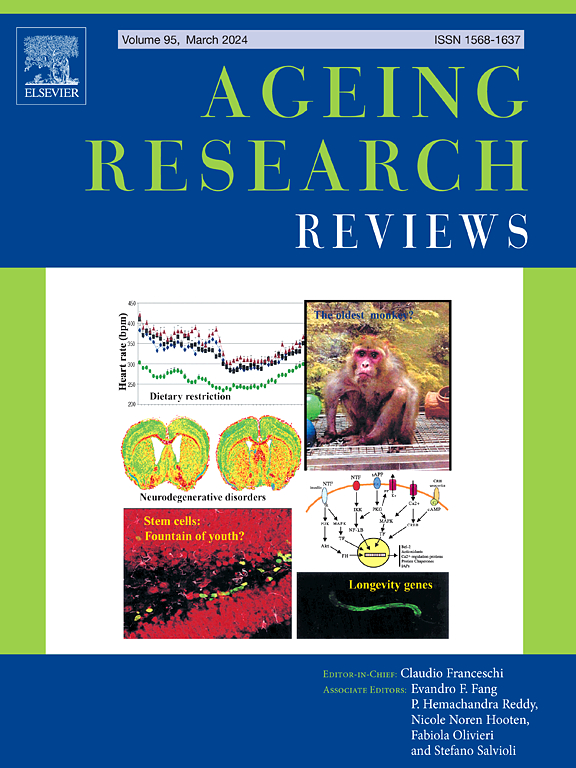
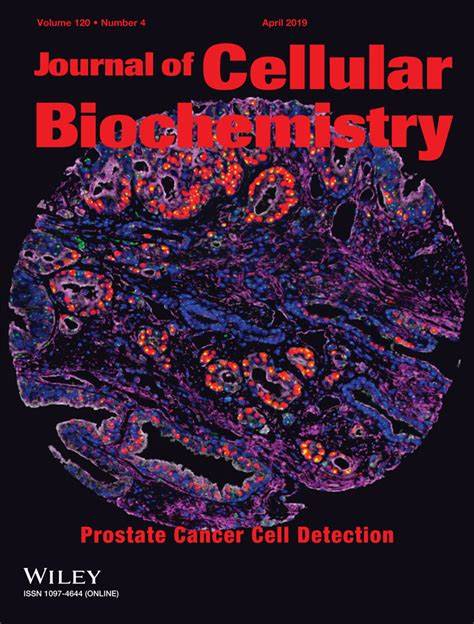
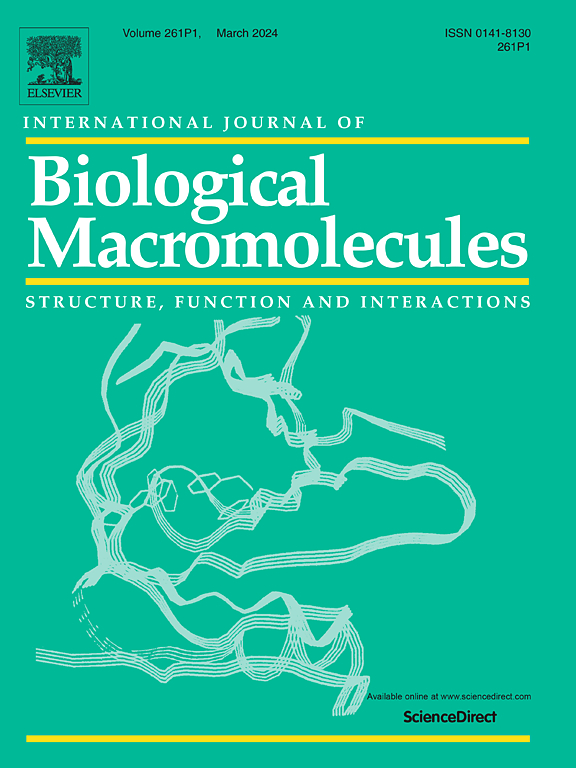
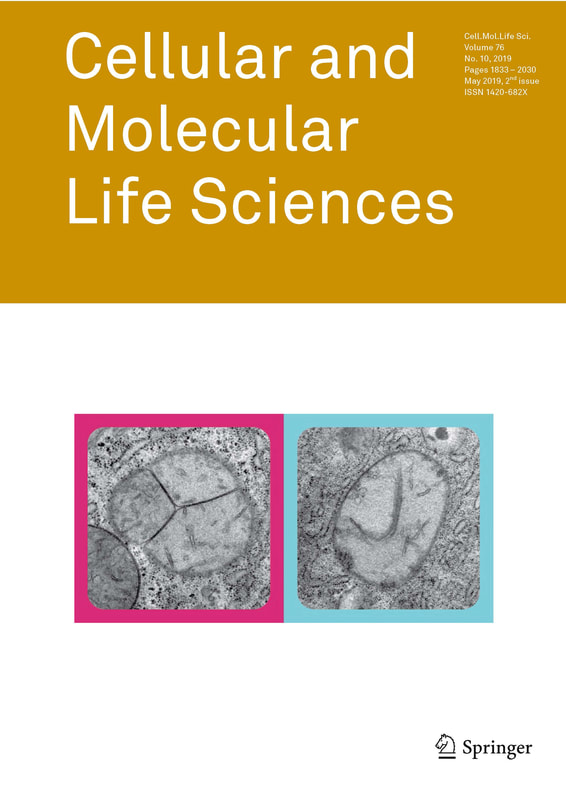
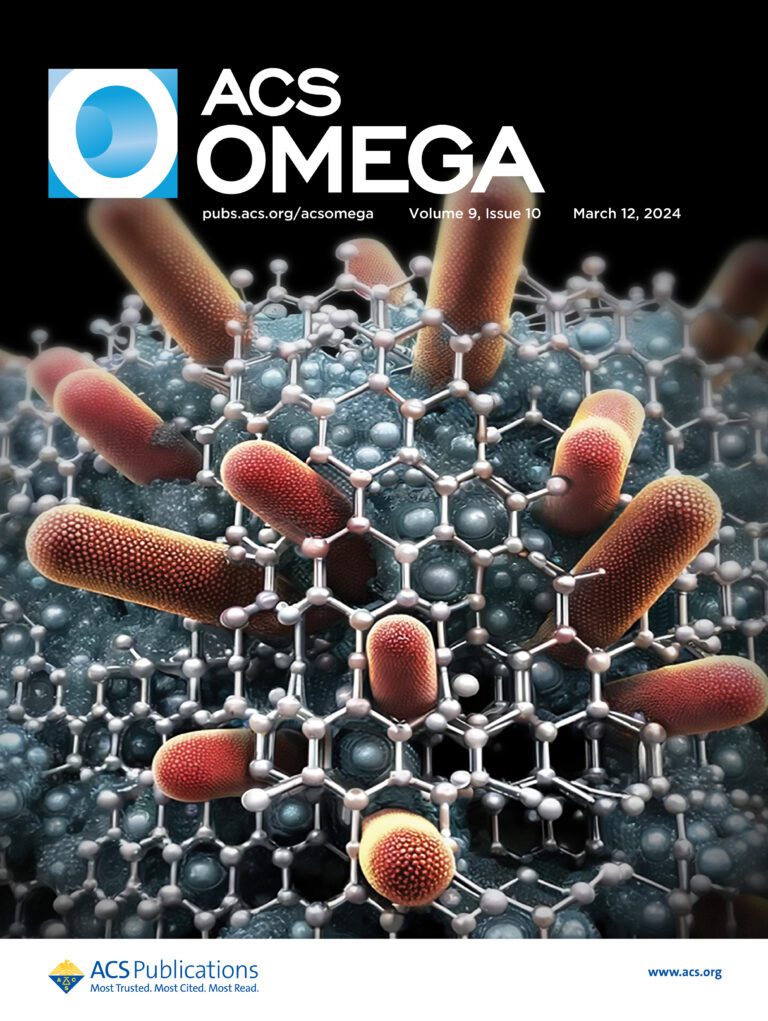

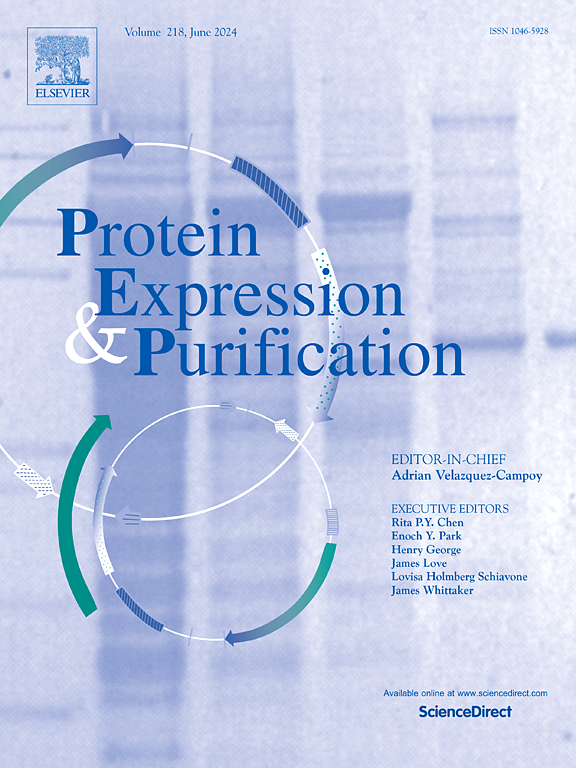
2024
Khan, T., Waseem, R., Shahid, M., Ansari, J., Hassan, M. I., Shamsi, A., & Islam, A. (2024). Understanding the Modulation of α-Synuclein Fibrillation by N-Acetyl Aspartate: A Brain Metabolite. ACS omega, 9(10), 12262–12271. https://doi.org/10.1021/acsomega.4c00595
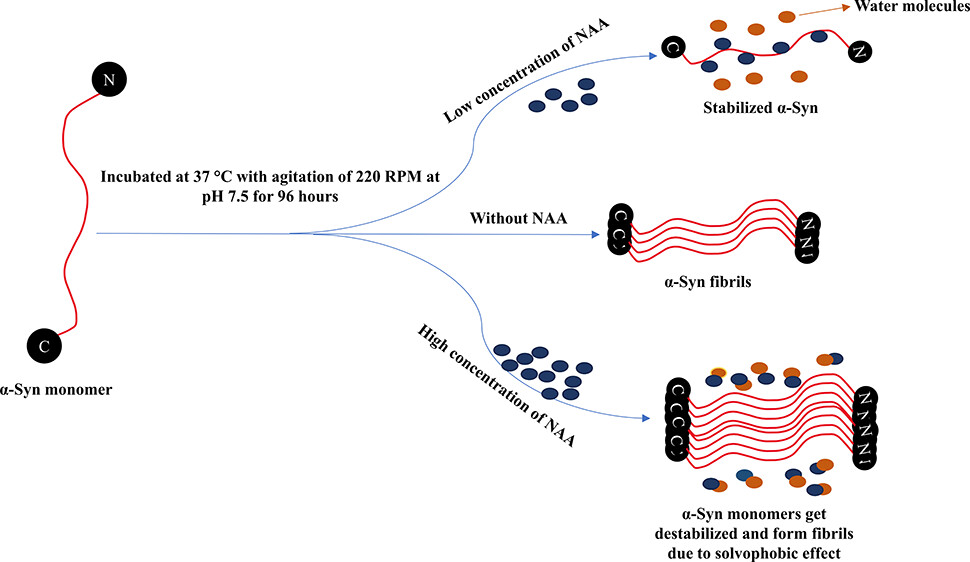
Iram, F., Shahid, M., Ansari, J., Ashraf, G. M., Hassan, M. I., & Islam, A. (2024). Navigating the Maze of Alzheimer’s Disease by Exploring BACE1: Discovery, Current Scenario, and Future Prospects. Ageing research reviews, 102342. Advance online publication. https://doi.org/10.1016/j.arr.2024.102342
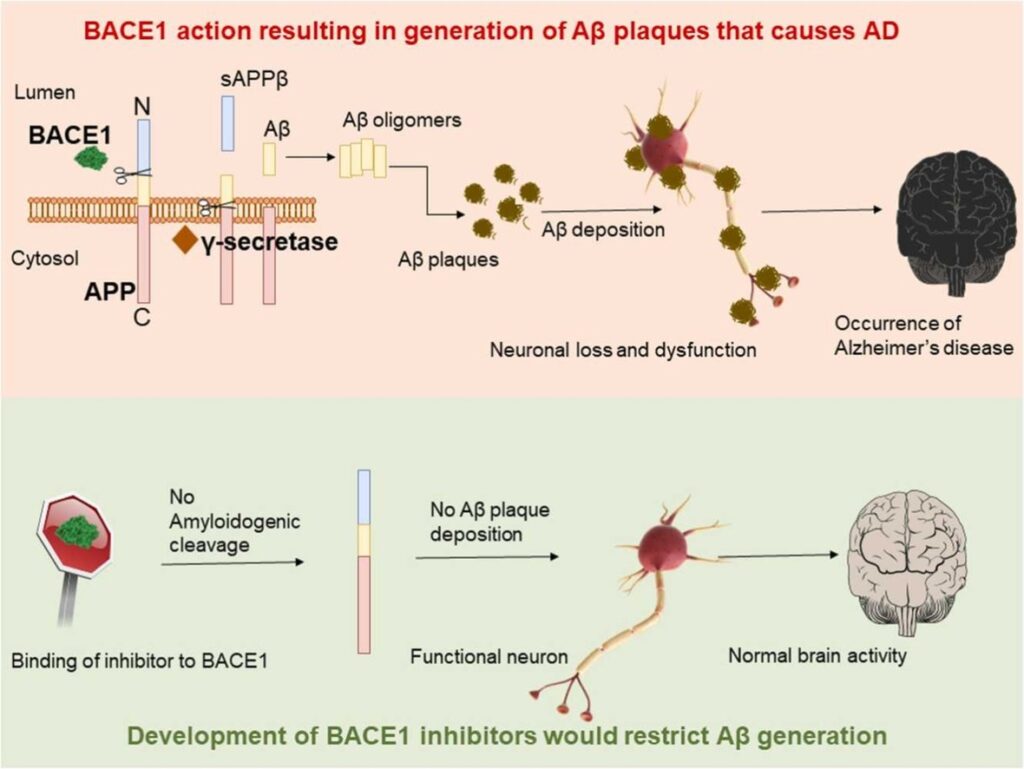
Khan, T., Waseem, R., Shahid, M., Ansari, J., Ahanger, I. A., Hassan, I., & Islam, A. (2023). Recent advancement in therapeutic strategies for Alzheimer’s disease: Insights from clinical trials. Ageing research reviews, 92, 102113. https://doi.org/10.1016/j.arr.2023.102113
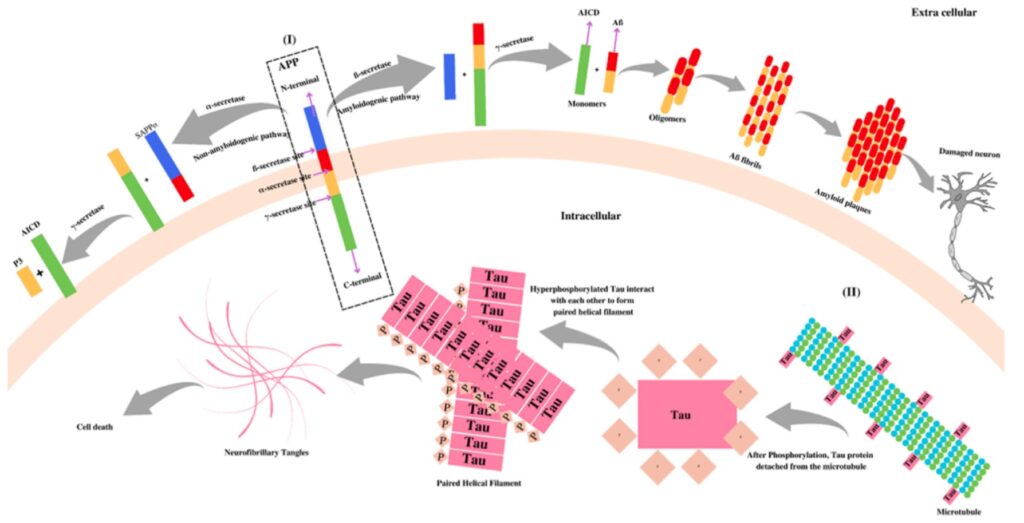
Bashir, S., Aiman, A., Chaudhary, A. A., Khan, N., Ahanger, I. A., Sami, N., Almugri, E. A., Ali, M. A. M., Khan, S. U., Shahid, M., Basir, S. F., Hassan, M. I., & Islam, A. (2024). Probing protein aggregation through spectroscopic insights and multimodal approaches: A comprehensive review for counteracting neurodegenerative disorders. Heliyon, 10(7), e27949. https://doi.org/10.1016/j.heliyon.2024.e27949
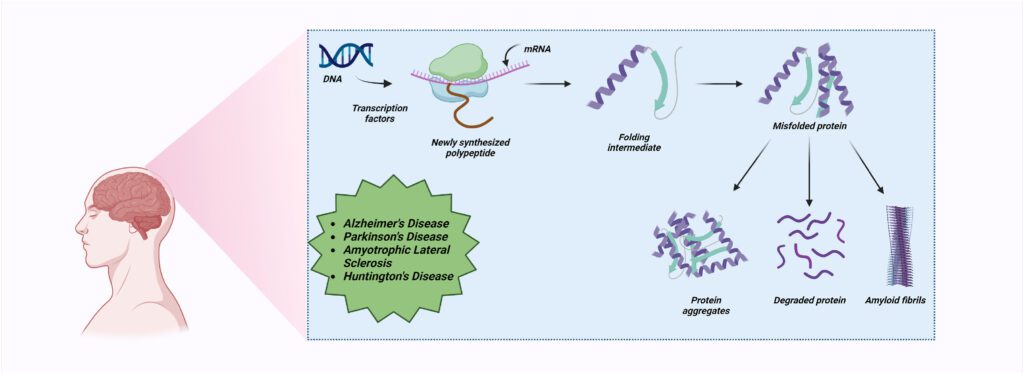
Taiyab, A., Choudhury, A., Haidar, S., Yousuf, M., Rathi, A., Koul, P., Chakrabarty, A., Islam, A., Shamsi, A., & Hassan, M. I. (2024). Exploring MTH1 inhibitory potential of Thymoquinone and Baicalin for therapeutic targeting of breast cancer. Biomedicine & pharmacotherapy = Biomedecine & pharmacotherapie, 173, 116332. https://doi.org/10.1016/j.biopha.2024.116332
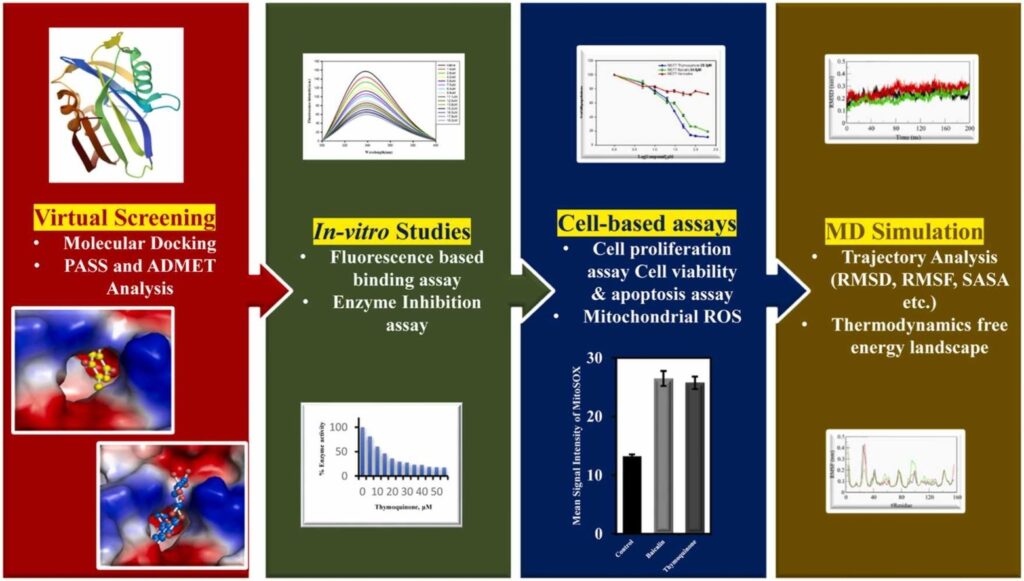
Choudhir, G., Shahid, M., & Islam, A. (2024). Elucidating the pH-Dependent Conformational Transitions of Eryngin: Insights from Molecular Dynamics Simulations. Informatics in Medicine Unlocked, 101508.
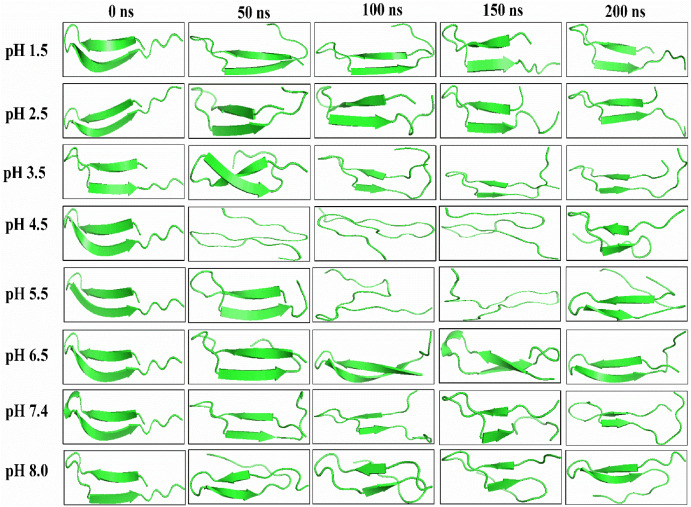
Taiyab, A., Haider, S., Choudhury, A., Rathi, A., Hussain, A., Alajmi, M. F., … & Hassan, M. I. (2024). Repurposing Resveratrol: A Novel Approach to Inhibit MTH1 for Effective Breast Cancer Therapy. https://doi.org/10.21203/rs.3.rs-4365362/v1
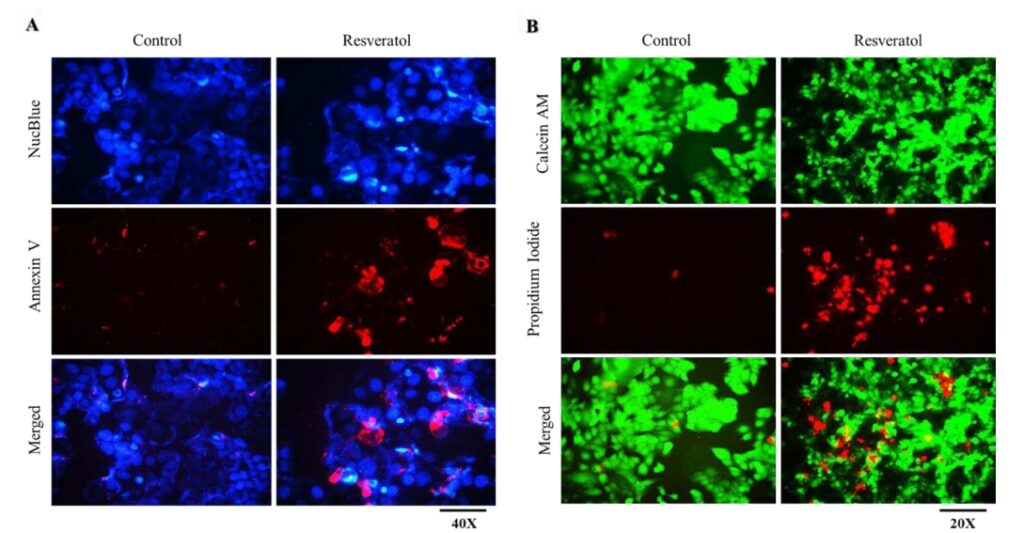
Taiyab, A., Haider, S., Choudhury, A., Rathi, A., Hussain, A., Alajmi, M. F., … & Hassan, M. I. (2024). Repurposing Resveratrol: A Novel Approach to Inhibit MTH1 for Effective Breast Cancer Therapy. https://doi.org/10.21203/rs.3.rs-4365362/v1
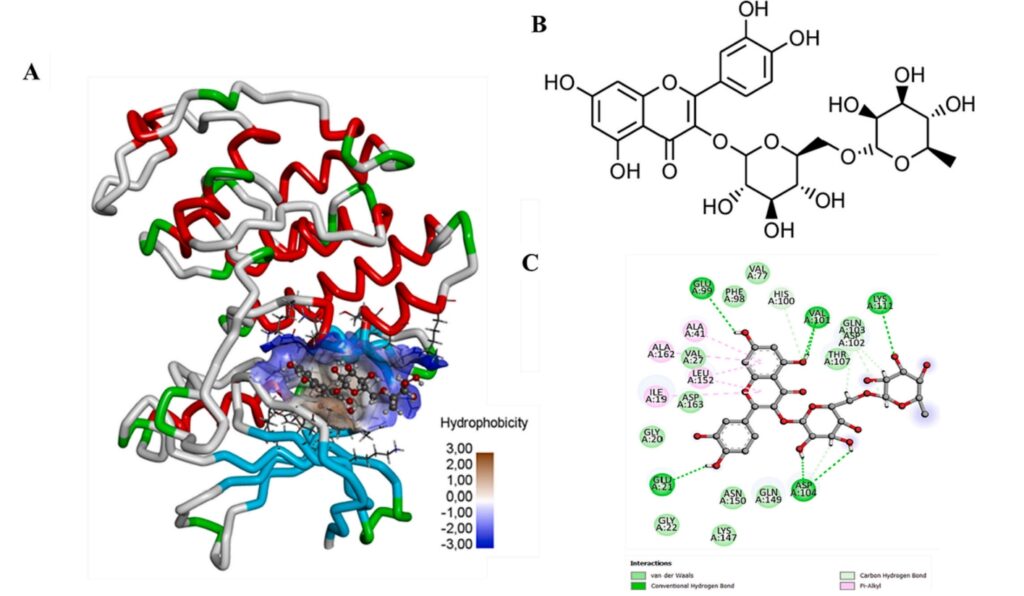
Bashir, S., Aiman, A., Shahid, M., Chaudhary, A. A., Sami, N., Basir, S. F., Hassan, I., & Islam, A., Professor (2024). Amyloid-induced neurodegeneration: A comprehensive review through aggregomics perception of proteins in health and pathology. Ageing research reviews, 96, 102276. https://doi.org/10.1016/j.arr.2024.102276
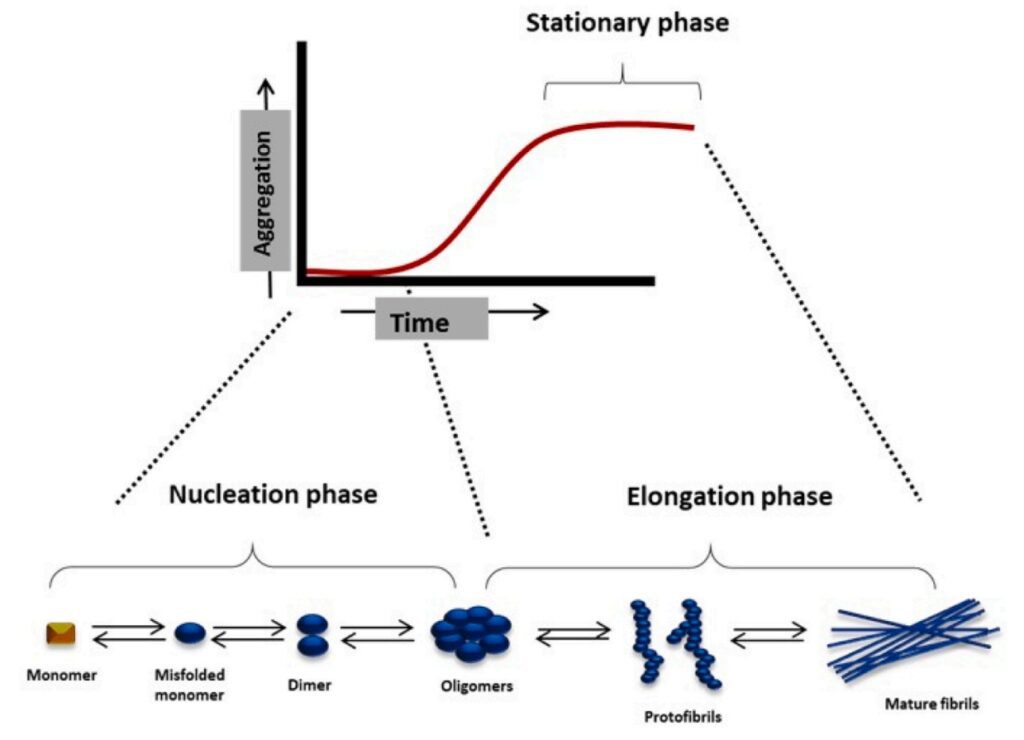
2025
Faiza Iram Ayesha Aiman, Danish Alam
Biophysical insights into pH-induced structural dynamics of recombinant interferon β-1b: Aggregation under acidic conditions Journal Article
In: International Journal of Biological Macromolecules, vol. 318, iss. 3, pp. 145128, 2025.
@article{nokey,
title = {Biophysical insights into pH-induced structural dynamics of recombinant interferon β-1b: Aggregation under acidic conditions},
author = {Ayesha Aiman, Faiza Iram, Danish Alam, Seemi Farhat Basir, Luqman Ahmad Khan, Mohammad Shahid, Asimul Islam},
url = {https://www.sciencedirect.com/science/article/pii/S0141813025056818},
doi = {https://doi.org/10.1016/j.ijbiomac.2025.145128},
year = {2025},
date = {2025-06-11},
journal = {International Journal of Biological Macromolecules},
volume = {318},
issue = {3},
pages = {145128},
abstract = {Recombinant interferon beta-1b (rIFN β-1b) is a therapeutic protein used to treat multiple sclerosis (MS). This study investigates the influence of solution conditions on the structural conformation of rIFN β-1b for better pharmaceutical formulations. The structural properties of rIFN β were studied at various pH values (2.0–12.0) using multiple biophysical techniques. Far UV CD and FTIR analysis confirmed the presence of α-helices in the native confirmation of rIFN β-1b as well as in alkaline conditions, exclusively. pH-dependent exposure of the tryptophan residues was probed by neutral (acrylamide) and ionic (iodide) quenching studies. At pH 5.0–12.0, rIFNβ-1b formed collisional complex with tryptophan at the excited state (dynamic quenching). Dye-binding studies validated the tertiary structural measurements by binding to the exposed hydrophobic patches and revealed protein aggregation between pH 2.0–4.0 …},
keywords = {},
pubstate = {published},
tppubtype = {article}
}
Sumaiya Khan Arunabh Choudhury, Mohammad Umar Saeed
In: Biochemical and Biophysical Research Communications, vol. 775, pp. 152166, 2025.
@article{nokey,
title = {Structure-guided discovery of tau-phosphorylating kinase DYRK1A inhibitors for therapeutic targeting of neuroinflammatory diseases: Insights from microsecond MD simulation and MMPBSA analyses},
author = {Arunabh Choudhury, Sumaiya Khan, Mohammad Umar Saeed, Taj Mohammad, Afzal Hussain, Mohamed F AlAjmi, Urooj Fatima, Asimul Islam, Md Imtaiyaz Hassan},
url = {https://www.sciencedirect.com/science/article/pii/S0006291X25008812},
doi = {https://doi.org/10.1016/j.bbrc.2025.152166},
year = {2025},
date = {2025-06-08},
urldate = {2025-06-08},
journal = {Biochemical and Biophysical Research Communications},
volume = {775},
pages = {152166},
abstract = {Tauopathies are a class of nearly 20 neurodegenerative diseases, classified into primary and secondary tauopathies. Alzheimer's disease (AD) is a type of secondary tauopathy in which abnormal phosphorylation of tau proteins takes place, which is linked to the kinase activity of dual-specificity tyrosine-phosphorylation-regulated kinase 1A (DYRK1A). Overexpression of DYRK1A hyperphosphorylates the tau protein, leading to its aggregation. Inhibiting DYRK1A activity can be a promising strategy to prevent tau hyperphosphorylation. In this study, we conducted a virtual screening of natural bioactive compounds from the ZINC database to identify potential small-molecule inhibitors of DYRK1A. The analyses revealed two compounds, ZINC08300244 and ZINC08964763, which showed a high binding affinity with DYRK1A and appropriate pharmacokinetic properties. Density functional theory (DFT) analysis of these two compounds was performed, and their stability of interaction with DYRK1A was further analysed by all-atom molecular dynamics (MD) simulations for 1 μs. Analysis of the MD trajectories was also performed using MM/PBSA and per-residue binding free energy decomposition. The results indicated the stable complex formation of DYRK1A with the two selected molecules for DYRK1A inhibition to prevent tau-hyperphosphorylation. This study highlights the use of virtual screening and MD simulations in finding natural product-based inhibitors of DYRK1A, which may lead to the development of novel therapeutic strategies for treating neuroinflammatory diseases.},
keywords = {},
pubstate = {published},
tppubtype = {article}
}
Shabina Mehtab Gourav Choudhir, Mohammad Shahid
In: Next Research, vol. 2, iss. 2, pp. 100327, 2025.
@article{nokey,
title = {Computational evaluation of Jeevamrutha metabolites binding affinity to MurE enzyme of Xanthomonas oryzae pv. oryzae for bacterial disease management},
author = {Gourav Choudhir, Shabina Mehtab, Mohammad Shahid, Faiza Iram, Anas Shamsi, Anwar Ahmed, Asimul Islam},
url = {https://www.sciencedirect.com/science/article/pii/S3050475925001988},
doi = {https://doi.org/10.1016/j.nexres.2025.100327},
year = {2025},
date = {2025-06-01},
journal = {Next Research},
volume = {2},
issue = {2},
pages = {100327},
abstract = {This study explores metabolites derived from Jeevamrutha, a traditional Indian agricultural practice commonly employed to manage crop health. Jeevamrutha offers a potential alternative to chemical pesticides, which harm the ecosystem and human well-being. This investigation utilized computational modeling to identify metabolites in Jeevamrutha that could bind to and inhibit MurE, an enzyme critical for bacterial cell wall synthesis, bacterial growth, and infections. Two hundred eighty-one Jeevamrutha metabolites were selected from the literature, and their binding energies with MurE were evaluated. The binding energies of the metabolites ranged from -3.3 to -8.7 kcal/mol. Metabolites with a binding energy of -8.0 kcal/mol or less were selected for interaction and toxicity analyses. Among the molecules considered, 2,5-Bis(5-tert-butyl-benzoxazol-2-yl)thiophene demonstrated a binding affinity of -8.4 kcal/mol and an LD50 of 10,000 mg/kg. Furthermore, molecular dynamics simulation results suggest that 2,5-Bis(5-tert-butyl-benzoxazol-2-yl)thiophene forms stable interactions with MurE. These results indicate that 2,5-Bis(5-tert-butyl-benzoxazol-2-yl)thiophene can potentially control bacterial diseases in agricultural fields. Optimizing Jeevamrutha for beneficial metabolite production could enhance agricultural productivity. Further research is required to confirm these results, including in vitro and in vivo experiments. This research contributes to the development of sustainable and safe agricultural practices. It is also possible that a Jeevamrutha formulation could improve the soil quality of fallow fields, potentially restoring their productivity.},
keywords = {},
pubstate = {published},
tppubtype = {article}
}
Faiza Iram Gourav Choudhir, Mohammad Shahid
In: Aspects of Molecular Medicine, vol. 5, pp. 100076, 2025.
@article{nokey,
title = {Antibacterial potential of Trichoderma bioactive metabolites in managing Staphylococcus aureus infection: Integrated molecular modeling approaches},
author = {Gourav Choudhir, Faiza Iram, Mohammad Shahid, Anas Shamsi, Md Imtaiyaz Hassan, Asimul Islam},
url = {https://www.sciencedirect.com/science/article/pii/S2949688825000140},
doi = {https://doi.org/10.1016/j.amolm.2025.100076},
year = {2025},
date = {2025-06-01},
urldate = {2025-06-01},
journal = {Aspects of Molecular Medicine},
volume = {5},
pages = {100076},
abstract = {Staphylococcus aureus is a primary hospital-acquired infection-causing bacteria that is becoming resistant to many antibiotics. Its infection sites range from skin to soft tissue. The development of drugs for managing Staphylococcus aureus infection is urgently required. Targeting the enzymes involved in bacteria maintaining the integrity of cell walls could provide advances compared to other targets. Integrating molecular modeling approaches with drug-likeness properties identified the metabolites with affinity and safety to use. Molecular docking results showed that three metabolites with promising binding affinities to FmtA and interactions with the vital amino acid residues are essential in catalytic activity. The drug likeliness analysis showed that selected metabolites do not have any violations of Lipinski rules. A molecular dynamics simulation study revealed that metabolites, bisorbibutenolide and Koninginin A, exhibited the most stable complexes with FmtA. Bisorbibutenolide and Koninginin A also formed hydrogen bonds with FmtA throughout the simulation. These findings suggest that bisorbibutenolide and Koninginin A have the potential for further development as an anti-Staphylococcus aureus agent via targeting FmtA. Moreover, comprehensive experimental studies are necessary to validate these computational findings.},
keywords = {},
pubstate = {published},
tppubtype = {article}
}
Asimul Islam Anam Bakhtiyar, Romana Ishrat
AI-driven approaches in therapeutic interventions: Transforming RNA-seq analysis into biomarker discovery and drug development Journal Article
In: Drug Discovery Today, vol. 30, iss. 7, pp. 104391, 2025.
@article{nokey,
title = { AI-driven approaches in therapeutic interventions: Transforming RNA-seq analysis into biomarker discovery and drug development},
author = {Anam Bakhtiyar, Asimul Islam, Romana Ishrat, Md Imtaiyaz Hassan},
url = {https://www.sciencedirect.com/science/article/pii/S1359644625001047},
doi = {https://doi.org/10.1016/j.drudis.2025.104391},
year = {2025},
date = {2025-05-29},
journal = {Drug Discovery Today},
volume = {30},
issue = {7},
pages = {104391},
abstract = {Pharmacotranscriptomics integrates transcriptomics and pharmacology to discover potential therapeutic targets for effective treatment. This review focuses on significant advancements in combining artificial intelligence (AI) with transcriptomic research, enabling the conversion of vast data sets into valuable knowledge for for developing effective therapeutics. We provide detailed insights into implementing machine learning (ML) techniques for analyzing intricate transcriptomic data, facilitating a comprehensive understanding of disease mechanisms and the identification of key signature genes for biomarker and drug development. We further highlighted the potential of ML to streamline the drug discovery process by revealing disease mechanisms and suggesting therapeutic interventions. This review presents a comprehensive framework of AI models and their applications within pharmacotranscriptomics analysis. We also discuss the challenges and limitations needed to optimize AI models for enhanced therapeutic outcomes.
},
keywords = {},
pubstate = {published},
tppubtype = {article}
}
Jyotishna Singh Sarika Bano, Zainy Zehra
Biochemical screening of phytochemicals and identification of a potential inhibitor of SARS-CoV-2 Mpro and investigating its thermodynamic impact on the structural stability Proceedings Article
In: Drug discovery and pharmacology, 2025.
@inproceedings{nokey,
title = {Biochemical screening of phytochemicals and identification of a potential inhibitor of SARS-CoV-2 Mpro and investigating its thermodynamic impact on the structural stability},
author = {Sarika Bano, Jyotishna Singh, Zainy Zehra, Asimul Islam, Sanjay Dey},
url = {https://www.jbc.org/article/S0021-9258(25)00880-4/fulltext},
doi = {https://doi.org/10.1016/j.jbc.2025.109031},
year = {2025},
date = {2025-05-01},
booktitle = {Drug discovery and pharmacology},
volume = {30},
number = {10931},
issue = {5},
abstract = {Objective of Study: The goal of this study is to use a combination of biochemical, biophysical, thermodynamic, and in silico techniques to examine the inhibitory potential of phytochemicals, in particular Scopoletin, against the SARS-CoV-2 main protease (Mpro). Statement of Methods: The interaction between Scopoletin and SARS-CoV-2 Mpro was examined, and its inhibitory potential and binding properties were evaluated, using a combination of biochemical assays, fluorescence and circular dichroism (CD) spectroscopy, isothermal titration calorimetry (ITC), and molecular modelling. A Summary of the Result: Current study employed biochemical, biophysical, thermodynamic, as well as in silico methods to examine the potential of phytochemicals resulting into the discovery of Scopoletin as a potential inhibitor of Mpro. Using a stoichiometric binding site (n) of one and Ka of 3.17 x 104 M−1, the fluorescence spectroscopy revealed that Scopoletin was actively quenching the Mpro. Measurements of synchronous fluorescence spectra revealed substantial alterations in the microenvironment surrounding tryptophan residues in the presence of Scopoletin, while CD-spectroscopy demonstrated prominent changes in the helical content. The findings of molecular modelling research and measurements using isothermal titration calorimetry (ITC) supported the spectroscopic data and shed light on their thermodynamic properties. Interestingly, Scopoletin exhibits significantly higher binding than the positive control-quercetin to Mpro, resulting in structural disruption and inhibition with an IC50 of 15.7μM. A Statement of Conclusion: In conclusion, Scopoletin shows strong potential as an inhibitor of SARS-CoV-2 Mpro, exhibiting higher binding affinity and greater inhibitory effects compared to the positive control quercetin, making it a promising candidate for further development as an antiviral agent against COVID-19.},
keywords = {},
pubstate = {published},
tppubtype = {inproceedings}
}
Anas Shamsi Gourav Choudhir, Mohammad Shahid
Targeting Rice Blast Disease: Evaluating Binding Affinity of Trichoderma Metabolite to Pyricularia oryzae GSK-1 through Molecular Modeling Approaches Journal Article
In: Next Research, vol. 2, iss. 2, pp. 100363, 2025.
@article{nokey,
title = {Targeting Rice Blast Disease: Evaluating Binding Affinity of Trichoderma Metabolite to Pyricularia oryzae GSK-1 through Molecular Modeling Approaches},
author = {Gourav Choudhir, Anas Shamsi, Mohammad Shahid, Anwar Ahmed, Md Imtaiyaz Hassan, Asimul Islam},
year = {2025},
date = {2025-04-28},
urldate = {2025-04-28},
journal = {Next Research},
volume = {2},
issue = {2},
pages = {100363},
abstract = {Rice blast disease, caused by the fungus Pyricularia oryzae, is a significant threat to global rice production. Managing rice blasts by inhibiting key enzymes involved in the pathogenesis and development of Pyricularia oryzae is advantageous. In this study, we investigated the potential of Trichoderma species metabolites to manage rice blast disease by inhibiting GSK-1, a crucial enzyme in the fungus's development and pathogenesis. Molecular docking and molecular dynamics simulation results showed that Trichotetronine and Bisorbibutenolide have a higher tendency with GSK-1 regarding binding affinity and stability. Molecular docking revealed that both metabolites interact with crucial amino acid residues at the GSK-1 catalytic sites. Further, molecular dynamics simulations suggested stable interactions between GSK-1 and selected metabolites throughout the simulation. These findings highlight Trichotetronine and Bisorbibutenolide as possible candidates for managing rice blast disease. However, further studies are needed to validate their efficacy for managing Pyricularia oryzae infection using experimental methods.},
keywords = {},
pubstate = {published},
tppubtype = {article}
}
Abdus Samad Tanzeel Khan, Rashid Waseem
In: ACS Chemical Neuroscience, vol. 16, iss. 9, pp. 1767–1779, 2025.
@article{nokey,
title = {Delineating the Mechanistic Insight of Inhibition of α-Synuclein Fibrillation by Neuro Metabolite, Myo-inositol: Implications in Synucleopathies-Related Disorders},
author = {Tanzeel Khan, Abdus Samad, Rashid Waseem, Ayesha Tazeen, Mohammad Shahid, Shama Parveen, Md Imtaiyaz Hassan, Asimul Islam},
url = {https://pubs.acs.org/doi/full/10.1021/acschemneuro.4c00843},
doi = {https://doi.org/10.1021/acschemneuro.4c00843},
year = {2025},
date = {2025-04-22},
urldate = {2025-04-22},
journal = {ACS Chemical Neuroscience},
volume = {16},
issue = {9},
pages = {1767–1779},
abstract = {The fibrillation of α-synuclein (α-syn) is a major factor contributing to neuronal damage and is critical in developing synucleopathies-related disorders. Considering this, the discovery of new compounds that can inhibit or modulate α-syn aggregation is a significant area of research. While polyol osmolytes have been shown to reduce α-syn fibrillation, the impact of brain metabolites such as myo-inositol (MI) on α-syn aggregation has not yet been explored. This study is the first to examine the effects of MI on α-syn aggregation, utilizing spectroscopic, microscopic, and cell cytotoxicity assay. Various aggregation assays revealed that MI inhibits the α-syn fibrillation in a dose-dependent manner. Fluorescence microscopy observations suggest that MI inhibits the α-syn fibrillation by forming amorphous aggregates. MTT assay revealed that α-syn aggregates in the presence of different concentrations of MI were not toxic as compared to α-syn fibrils. Thus, the mechanistic insight of inhibition of α-syn fibrillation by MI was explored by employing interaction studies using spectroscopic, calorimetric, and in silico approaches. Surface plasmon resonance and isothermal titration calorimetry suggest that MI-α-syn interacted with significant binding affinity, and the reaction was spontaneous. Molecular docking results depict that MI interacted with the aggregation-prone residues (36–42) at the N-terminal of α-syn, thereby stabilizing the α-syn and preventing the fibril formation. Molecular dynamics simulation results demonstrate the stability of the complex formation of MI with α-syn. This study highlighted the mechanistic insight of MI on preventing the α-syn from forming amyloid fibril, which could be further explored for therapeutic management of synucleopathies-related disorders.},
keywords = {},
pubstate = {published},
tppubtype = {article}
}
Arunabh Choudhury Sumaiya Khan, Taj Mohammad
In: Scientific Reports, vol. 15, iss. 1, pp. 13604, 2025.
@article{nokey,
title = {Structure-guided screening identified bioactive phytoconstituents Hernandonine and Anolobine as potential inhibitors of dual specificity protein kinase CLK1},
author = {Sumaiya Khan, Arunabh Choudhury, Taj Mohammad, Anas Shamsi, Md Imtaiyaz Hassan, Asimul Islam},
url = {https://www.nature.com/articles/s41598-025-97753-2},
doi = {https://doi.org/10.1038/s41598-025-97753-2},
year = {2025},
date = {2025-04-19},
journal = {Scientific Reports},
volume = {15},
issue = {1},
pages = {13604},
abstract = {Neurodegenerative diseases such as Alzheimer’s disease (AD) are becoming a global health concern because of their progressive nature and the extent of the disability they cause to the affected individuals. Existing therapies for neurodegenerative diseases are primarily limited to symptomatic management and have shown diminishing efficacy over time, often leading to resistance. Therefore, there is an urgent need for novel therapeutic interventions that offer improved effectiveness with fewer side effects. A promising approach that has been suggested in neurodegenerative diseases, especially AD, is the prevention of tau phosphorylation by using kinase inhibitors. CDC2-like kinase 1 (CLK1) is a dual-specificity proline-directed protein kinase that is involved in both tau phosphorylation and splicing regulation and is thus a potential drug target. Currently, there are several small molecular CLK1 inhibitors, but problems like drug resistance and side effects still exist. In this study, we have used a structure-guided virtual screening approach to screen the bioactive phytoconstituents of Indian medicinal plants for potential CLK1 inhibitors. The systematic virtual screening involving molecular docking, density functional theory (DFT), and pharmacokinetic profiling, pinpointed Hernandonine and Anolobine as promising compounds due to their druglike properties and high binding affinity with CLK1. To assess the stability and interaction of these compounds with CLK1, all-atom molecular dynamics (MD) simulations and essential dynamics were performed for 500 ns. The results indicate that Hernandonine and Anolobine have a high potential for CLK1 inhibition and can be used as promising leads for developing novel effective drugs against neurodegeneration. This work underlines the importance of the combined use of virtual screening and MD simulations in the search for phytochemical-based CLK1 inhibitors, which can lead to the development of new therapeutic approaches in the treatment of neurodegenerative diseases such as AD.},
keywords = {},
pubstate = {published},
tppubtype = {article}
}
Faiza Iram Gourav Choudhir, Mohammad Shahid
Inhibition potential of margolonone and isomargolonone against the dengue virus protease using molecular modeling approaches Journal Article
In: Frontiers in Bioinformatics, vol. 5, pp. 1517115, 2025.
@article{nokey,
title = {Inhibition potential of margolonone and isomargolonone against the dengue virus protease using molecular modeling approaches},
author = {Gourav Choudhir, Faiza Iram, Mohammad Shahid, Anas Shamsi, Md Imtaiyaz Hassan, Asimul Islam},
url = {https://pmc.ncbi.nlm.nih.gov/articles/PMC11979248/},
doi = {https://doi.org/10.3389/fbinf.2025.1517115},
year = {2025},
date = {2025-03-26},
urldate = {2025-03-26},
journal = {Frontiers in Bioinformatics},
volume = {5},
pages = {1517115},
abstract = {Background
Dengue is a mosquito-borne viral disease with no cure. Inhibiting key enzymes vital in replication could manage the dengue virus infection. This study investigated the potential of margolonone and isomargolonone from Azadirachta indica to inhibit dengue virus replication.
Methods
The 3D structure of margolonone and isomargolonone were obtained from the PubChem database. The drug-likeness properties of these molecules were performed using a Swiss-ADME server. The molecular docking and molecular dynamics simulation assessed binding affinity and interactions.
Results
The drug-likeness of parameters showed that Margolonone and isoMargolonone showed zero violation of Lipinski rules. Docking simulations showed that both compounds bind to the active site of a critical enzyme (NS3 protease) essential for viral replication. Molecular dynamics simulations suggested that isomargolonone may bind more stably to NS3 than margolonone. Additionally, MMPBSA analysis showed that Margolonone does not show favorable binding energy.
Conclusion
These findings warrant further investigation of isomargolonone as a potential anti-dengue drug. Further in-vitro and in-vivo evaluations need to be done before accepting it as drug molecules.},
keywords = {},
pubstate = {published},
tppubtype = {article}
}
Dengue is a mosquito-borne viral disease with no cure. Inhibiting key enzymes vital in replication could manage the dengue virus infection. This study investigated the potential of margolonone and isomargolonone from Azadirachta indica to inhibit dengue virus replication.
Methods
The 3D structure of margolonone and isomargolonone were obtained from the PubChem database. The drug-likeness properties of these molecules were performed using a Swiss-ADME server. The molecular docking and molecular dynamics simulation assessed binding affinity and interactions.
Results
The drug-likeness of parameters showed that Margolonone and isoMargolonone showed zero violation of Lipinski rules. Docking simulations showed that both compounds bind to the active site of a critical enzyme (NS3 protease) essential for viral replication. Molecular dynamics simulations suggested that isomargolonone may bind more stably to NS3 than margolonone. Additionally, MMPBSA analysis showed that Margolonone does not show favorable binding energy.
Conclusion
These findings warrant further investigation of isomargolonone as a potential anti-dengue drug. Further in-vitro and in-vivo evaluations need to be done before accepting it as drug molecules.
Moyad Shahwan Anas Shamsi, Sohaib Naseem Khan
Identification of high-affinity inhibitors for epoxide hydrolase 2 from repurposed drugs in Parkinson’s disease therapeutics Journal Article
In: Journal of Biomolecular Structure and Dynamics, pp. 1-12, 2025.
@article{nokey,
title = {Identification of high-affinity inhibitors for epoxide hydrolase 2 from repurposed drugs in Parkinson’s disease therapeutics},
author = {Anas Shamsi, Moyad Shahwan, Sohaib Naseem Khan, Dharmendra Kumar Yadav, Nojood Altwaijry, Asimul Islam, Mohd Shahnawaz Khan},
url = {https://www.tandfonline.com/doi/full/10.1080/07391102.2025.2497448},
doi = {https://doi.org/10.1080/07391102.2025.2497448},
year = {2025},
date = {2025-03-24},
journal = {Journal of Biomolecular Structure and Dynamics},
pages = {1-12},
abstract = {Parkinson’s disease (PD) is a prevalent neurodegenerative disorder characterized by the loss of dopaminergic neurons in the substantia nigra that leads to bradykinesia and rest tremors. While the molecular mechanisms underlying PD are not fully understood, rising evidence shows neuroinflammation as a key factor in dopaminergic neuron damage. The soluble epoxide hydrolase (sEH) has appeared as a key player in neuroinflammation associated with PD which represents itself as a promising drug target. Here, we employed a structure-based virtual screening methodology using repurposed drugs from the DrugBank database to identify high-affinity potential inhibitors of sEH. Results showed that two hit molecules, Fluspirilene and Penfluridol, demonstrated appreciable docking potential and specificity toward the sEH active site. These molecules exhibited favorable pharmacological properties and formed critical interactions with residues essential for sEH activity. Further, all-atom molecular dynamics (MD) simulations followed by principal component analysis and free energy landscape were carried out which provide deeper insights into the conformational stability and interaction mechanisms of sEH in complex with Fluspirilene and Penfluridol. The simulation results indicated that the interaction of sEH with Fluspirilene and Penfluridol contributed to the stabilization of its structure throughout the MD trajectories of 500 ns. These findings collectively suggest that Fluspirilene and Penfluridol hold potential as repurposed leads for the development of sEH inhibitors, which offer therapeutic implications for combating PD and other associated conditions.},
keywords = {},
pubstate = {published},
tppubtype = {article}
}
In: Viruses, vol. 17, iss. 3, pp. 402, 2025.
@article{nokey,
title = {Biochemical Screening of Phytochemicals and Identification of Scopoletin as a Potential Inhibitor of SARS-CoV-2 Mpro, Revealing Its Biophysical Impact on Structural Stability},
url = {https://www.mdpi.com/1999-4915/17/3/402},
doi = {https://doi.org/10.3390/v17030402},
year = {2025},
date = {2025-03-12},
journal = {Viruses},
volume = {17},
issue = {3},
pages = {402},
abstract = {The main protease (Mpro or 3CLpro or nsp5) of SARS-CoV-2 is crucial to the life cycle and pathogenesis of SARS-CoV-2, making it an attractive drug target to develop antivirals. This study employed the virtual screening of a few phytochemicals, and the resultant best compound, Scopoletin, was further investigated by a FRET-based enzymatic assay, revealing an experimental IC50 of 15.75 µM. The impact of Scopoletin on Mpro was further investigated by biophysical and MD simulation studies. Fluorescence spectroscopy identified a strong binding constant of 3.17 × 104 M⁻1 for Scopoletin binding to Mpro, as demonstrated by its effective fluorescence quenching of Mpro. Additionally, CD spectroscopy showed a significant reduction in the helical content of Mpro upon interaction with Scopoletin. The findings of thermodynamic measurements using isothermal titration calorimetry (ITC) supported the spectroscopic data, indicating a tight binding of Scopoletin to Mpro with a KA of 2.36 × 103 M−1. Similarly, interaction studies have also revealed that Scopoletin forms hydrogen bonds with the amino acids nearest to the active site, and this has been further supported by molecular dynamics simulation studies. These findings indicate that Scopoletin may be developed as a potential antiviral treatment for SARS-CoV-2 by targeting Mpro.},
keywords = {},
pubstate = {published},
tppubtype = {article}
}
Sushil Kumar Gourav Choudhir, Mohammad Shahid
Telomeric RNA quadruplexes as targets for cancer prevention: The therapeutic potential of agonodepsides Journal Article
In: Journal of Genetic Engineering and Biotechnology, vol. 23, iss. 1, pp. 100454, 2025.
@article{nokey,
title = {Telomeric RNA quadruplexes as targets for cancer prevention: The therapeutic potential of agonodepsides},
author = {Gourav Choudhir, Sushil Kumar, Mohammad Shahid, Anas Shamsi, Asimul Islam},
url = {https://www.sciencedirect.com/science/article/pii/S1687157X24001574},
doi = {https://doi.org/10.1016/j.jgeb.2024.100454},
year = {2025},
date = {2025-03-01},
journal = {Journal of Genetic Engineering and Biotechnology},
volume = {23},
issue = {1},
pages = {100454},
abstract = {Background
Cancer remains an awful challenge, despite years of targeting proteins to control its relentless growth and spread. Fungal metabolites, a treasure of natural chemicals, offer a glimmer of hope. Telomeres, the cellular “caps,” are a focal point in cancer research. This study explores the potential of stabilizing Telomeric Repeats-containing RNA G-quadruplex (TERRA G4) structures within telomeres. This stabilization could block telomerase, the enzyme that repairs telomeres, and potentially trigger cancer cell death. Agonodepsides A and B, two promising fungal metabolites, were chosen to investigate this exciting possibility.
Methods
Agonodepside A and B were initially screened for drug likeness employing SwissAdme. AutoDock Vina was used for molecular docking, and ligands and TERRA G4 were prepared using PyRx and MGL tool. Discovery Studio software was utilized for the visualization of interactions between ligands and TERRA G4. For validation of docking results MD simulation for control and complexes was carried out for 250 ns and trajectories were analyzed for different parameters. MMPBSA was used to calculate binding free energy for control and complexes. To find the stable and lower energy states of complexes in comparison to control principal component analysis (PCA) and free energy landscape (FEL) were conducted.
Results
Absorption, distribution, metabolism, and excretion (ADME) of both agonodepsides followed Lipinski’s rule of five with zero violation. Molecular docking revealed several key interactions including hydrogen bonds, van der Waals interactions, π-alkyl and π-anion. MD simulation revealed that Agonodepside A interact with TERRA G4 and stabilize it while Agonodepside B interactions were transient. The MMPBSA binding free energy calculation, PCA and free energy landscapes supported the docking and MD simulation results.
Conclusion
Lichenized fungi produce agonodepsides A and B, may fight cancer by targeting telomeres. Agonodepside A binds more strongly to telomeres than B, potentially blocking enzyme telomerase. Further studies are required to validate these findings and evaluate potential safety concerns.},
keywords = {},
pubstate = {published},
tppubtype = {article}
}
Cancer remains an awful challenge, despite years of targeting proteins to control its relentless growth and spread. Fungal metabolites, a treasure of natural chemicals, offer a glimmer of hope. Telomeres, the cellular “caps,” are a focal point in cancer research. This study explores the potential of stabilizing Telomeric Repeats-containing RNA G-quadruplex (TERRA G4) structures within telomeres. This stabilization could block telomerase, the enzyme that repairs telomeres, and potentially trigger cancer cell death. Agonodepsides A and B, two promising fungal metabolites, were chosen to investigate this exciting possibility.
Methods
Agonodepside A and B were initially screened for drug likeness employing SwissAdme. AutoDock Vina was used for molecular docking, and ligands and TERRA G4 were prepared using PyRx and MGL tool. Discovery Studio software was utilized for the visualization of interactions between ligands and TERRA G4. For validation of docking results MD simulation for control and complexes was carried out for 250 ns and trajectories were analyzed for different parameters. MMPBSA was used to calculate binding free energy for control and complexes. To find the stable and lower energy states of complexes in comparison to control principal component analysis (PCA) and free energy landscape (FEL) were conducted.
Results
Absorption, distribution, metabolism, and excretion (ADME) of both agonodepsides followed Lipinski’s rule of five with zero violation. Molecular docking revealed several key interactions including hydrogen bonds, van der Waals interactions, π-alkyl and π-anion. MD simulation revealed that Agonodepside A interact with TERRA G4 and stabilize it while Agonodepside B interactions were transient. The MMPBSA binding free energy calculation, PCA and free energy landscapes supported the docking and MD simulation results.
Conclusion
Lichenized fungi produce agonodepsides A and B, may fight cancer by targeting telomeres. Agonodepside A binds more strongly to telomeres than B, potentially blocking enzyme telomerase. Further studies are required to validate these findings and evaluate potential safety concerns.
Farha Deeba Kukkala Kiran Kumar, Ajay Kumar Pandey
Sustainable lipid production by oleaginous yeasts: Current outlook and challenges Journal Article
In: Bioresource Technology, vol. 421, pp. 132205, 2025.
@article{nokey,
title = {Sustainable lipid production by oleaginous yeasts: Current outlook and challenges},
author = {Kukkala Kiran Kumar, Farha Deeba, Ajay Kumar Pandey, Asimul Islam, Debarati Paul, Naseem A Gaur},
url = {https://www.sciencedirect.com/science/article/pii/S0960852425001713},
doi = {https://doi.org/10.1016/j.biortech.2025.132205},
year = {2025},
date = {2025-02-25},
journal = {Bioresource Technology},
volume = {421},
pages = {132205},
abstract = {Yeast lipid has gained prominence as a sustainable energy source and so various oleaginous yeasts are being investigated to create efficient lipogenic platforms. This review aims to assess the various biotechnological strategies for enhanced production of yeast lipids via agro-waste processing and media engineering including multiomic analyses, genetic engineering, random mutagenesis, and laboratory adaptive evolution. The review also emphasizes the role of cutting-edge omics technologies in pinpointing differentially expressed genes and enriched networks crucial for designing advanced metabolic engineering strategies for prominent oleaginous yeast species. The review addresses the challenges and future prospects of a viable lipid production industry that is possible through advancements in current technologies, strain improvement, media optimization and techno-economic and life cycle analyses at lab, pilot and industrial scales. This review comprehensively provides deep insights for enhancement of yeast lipid biosynthesis to reach industrially benchmarked standard of a lipid production platform.},
keywords = {},
pubstate = {published},
tppubtype = {article}
}
Arunabh Choudhury Sneh Prabha, Asimul Islam
Understanding of Alzheimer's Disease Pathophysiology for Therapeutic Implications of Natural Products as Neuroprotective Agents Journal Article
In: Ageing Research Reviews, vol. 105, pp. 102680, 2025.
@article{nokey,
title = { Understanding of Alzheimer's Disease Pathophysiology for Therapeutic Implications of Natural Products as Neuroprotective Agents},
author = {Sneh Prabha, Arunabh Choudhury, Asimul Islam, Sonu Chand Thakur, Md Imtaiyaz Hassan},
year = {2025},
date = {2025-02-25},
urldate = {2025-02-25},
journal = {Ageing Research Reviews},
volume = {105},
pages = {102680},
abstract = {Alzheimer’s disease (AD) is a leading cause of dementia, affecting more than 24.3 million people worldwide in 2024. Sporadic AD (SAD) is more common and occurs in the geriatric population, while familial AD (FAD) is rare and appears before the age of 65 years. Due to progressive cholinergic neuronal loss and modulation in the PKC/MAPK pathway, β-secretase gets upregulated, leading to Aβ aggregation, which further activates tau kinases that form neurofibrillary tangles (NFT). Simultaneously, antioxidant enzymes are also upregulated, increasing oxidative stress (OS) and reactive species by impairing mitochondrial function, leading to DNA damage and cell death. This review discusses the classifications and components of several natural products (NPs) that target these signaling pathways for AD treatment. NPs, including alkaloids, polyphenols, flavonoids, polysaccharides, steroids, fatty acids, tannins, and polypeptides derived from plants, microbes, marine animals, venoms, insects, and mushrooms, are explored in detail. A synergistic combination of plant metabolites, together with prebiotics and probiotics has been shown to decrease Aβ aggregates by increasing the production of bioactive compounds. Toxins derived from venomous organisms have demonstrated effectiveness in modulating signaling pathways and reducing OS. Marine metabolites have also shown neuroprotective and anti-inflammatory properties. The cholera toxin B subunit and an Aβ15 fragment have been combined to create a possible oral AD vaccine, that showed enhancement of cognitive function in mice. Insect tea is also a reliable source of antioxidants. A functional edible mushroom snack bar showed an increment in cognitive markers. Future directions and therapeutic approaches for the treatment of AD can be improved by focusing more on NPs derived from these sources.},
keywords = {},
pubstate = {published},
tppubtype = {article}
}
Arunabh Choudhury Sneh Prabha, Asimul Islam
Understanding of Alzheimer's Disease Pathophysiology for Therapeutic Implications of Natural Products as Neuroprotective Agents Journal Article
In: Ageing Research Reviews, vol. 105, pp. 102680, 2025, ISSN: 1568-1637.
@article{Prabha2025,
title = {Understanding of Alzheimer's Disease Pathophysiology for Therapeutic Implications of Natural Products as Neuroprotective Agents},
author = {Sneh Prabha, Arunabh Choudhury, Asimul Islam, Sonu Chand Thakur, Md. Imtaiyaz Hassan},
doi = {https://doi.org/10.1016/j.arr.2025.102680},
issn = {1568-1637},
year = {2025},
date = {2025-02-06},
urldate = {2025-02-06},
journal = { Ageing Research Reviews},
volume = {105},
pages = {102680},
abstract = {Alzheimer’s disease (AD) is a leading cause of dementia, affecting more than 24.3 million people worldwide in 2024. Sporadic AD (SAD) is more common and occurs in the geriatric population, while familial AD (FAD) is rare and appears before the age of 65 years. Due to progressive cholinergic neuronal loss and modulation in the PKC/MAPK pathway, β-secretase gets upregulated, leading to Aβ aggregation, which further activates tau kinases that form neurofibrillary tangles (NFT). Simultaneously, antioxidant enzymes are also upregulated, increasing oxidative stress (OS) and reactive species by impairing mitochondrial function, leading to DNA damage and cell death. This review discusses the classifications and components of several natural products (NPs) that target these signaling pathways for AD treatment. NPs, including alkaloids, polyphenols, flavonoids, polysaccharides, steroids, fatty acids, tannins, and polypeptides derived from plants, microbes, marine animals, venoms, insects, and mushrooms, are explored in detail. A synergistic combination of plant metabolites, together with prebiotics and probiotics has been shown to decrease Aβ aggregates by increasing the production of bioactive compounds. Toxins derived from venomous organisms have demonstrated effectiveness in modulating signaling pathways and reducing OS. Marine metabolites have also shown neuroprotective and anti-inflammatory properties. The cholera toxin B subunit and an Aβ15 fragment have been combined to create a possible oral AD vaccine, that showed enhancement of cognitive function in mice. Insect tea is also a reliable source of antioxidants. A functional edible mushroom snack bar showed an increment in cognitive markers. Future directions and therapeutic approaches for the treatment of AD can be improved by focusing more on NPs derived from these sources.},
keywords = {},
pubstate = {published},
tppubtype = {article}
}
Tanzeel Khan Danish Alam, Farha Naaz
In: Journal of Molecular Liquids, vol. 419, pp. 126746, 2025.
@article{nokey,
title = {Delineating the effect of trehalose nanoparticles on aggregation pattern of apo-α-lactalbumin protein: A nano-approach towards counteracting proteinopathies},
author = {Danish Alam, Tanzeel Khan, Farha Naaz, Tokeer Ahmad, Mohammad Shahid, Md Imtaiyaz Hassan, Asimul Islam, Meryam Sardar},
url = {https://www.sciencedirect.com/science/article/pii/S0167732224028071},
doi = {https://doi.org/10.1016/j.molliq.2024.126746},
year = {2025},
date = {2025-02-01},
journal = {Journal of Molecular Liquids},
volume = {419},
pages = {126746},
abstract = {Investigation of protein aggregation is a challenging and daunting task as it is associated with many amyloid-related diseases like Alzheimer’s, Parkinson’s diseases, etc. Sugar-based osmolytes are known to stabilize proteins under stress, however, their role in inhibiting protein aggregation is ambiguous. The role of molecular trehalose on the aggregation pattern of apo-alpha-lactalbumin protein (apo-α-LA) was studied earlier in our lab. In this study, we have utilized trehalose nanoparticles (TNPs) as an anti-aggregation agent against the thermally aggregated apo-α-LA. The effect of TNPs on the aggregation profile of apo-α-LA was observed by multi-spectroscopic and microscopic approaches, wherein UV–Vis spectroscopy, ThT assay, ANS fluorescence as well as Rayleigh scattering demonstrated that TNPs effectively prevent apo-α-LA aggregation when compared with molecular trehalose. Further validation was carried out with confocal microscopy that also supported the role of TNPs in preventing aggregation of apo-α-LA. Here, the effect of TNPs on the aggregation pattern of apo-α-LA was found to be a better than molecular trehalose, which advocates the application of nanotechnology to counter neurodegeneration. We believe that the inferences drawn from this study may suggest that the nanoparticle form of biocompatible sugar-related osmolytes can act as anti-aggregation agents toward protein aggregation.},
keywords = {},
pubstate = {published},
tppubtype = {article}
}
Mohammad Furkan Mohammed Alrouji, Ghala Rashid Humaid Alnuaimi
Employing spectroscopic, calorimetric and structural bioinformatics approaches to decipher the binding mechanism of mangiferin with human transferrin Journal Article
In: International Journal of Biological Macromolecules, vol. 289, pp. 138829, 2025.
@article{nokey,
title = {Employing spectroscopic, calorimetric and structural bioinformatics approaches to decipher the binding mechanism of mangiferin with human transferrin},
author = {Mohammed Alrouji, Mohammad Furkan, Ghala Rashid Humaid Alnuaimi, Sabina Yasmin, Fahad A Alhumaydhi, Rizwan Hasan Khan, Moyad Shahwan, Saleha Anwar, Asimul Islam, Anas Shamsi},
year = {2025},
date = {2025-02-01},
urldate = {2025-02-01},
journal = {International Journal of Biological Macromolecules},
volume = {289},
pages = {138829},
abstract = {In recent times, neurodegenerative diseases (NDs), such as Alzheimer's disease (AD), Parkinson's disease (PD) and others, represent a major global health challenge with increasing prevalence and significant socio-economic impact. These diseases, characterized by progressive neuronal loss, currently lack effective therapies. Phytochemicals offer promising therapeutic potential due to their diverse bioactive properties. Mangiferin, a glucosylxanthone found in mangoes and other plants, has shown significant therapeutic potential in NDs. Human transferrin (Tf), an iron-binding protein crucial for iron homeostasis, is implicated in ND pathogenesis. This study delineates the interaction between Mangiferin and Tf. Molecular docking revealed Mangiferin predominantly interacts with Tf's binding site, engaging critical residues. Molecular dynamics simulations over 200 ns demonstrated the stability of the Tf-Mangiferin complex without major deviations. Fluorescence binding assays confirmed the strong binding affinity of Mangiferin to Tf. Additionally, Isothermal titration calorimetry (ITC) validated the spontaneous binding of Mangiferin with Tf, providing detailed thermodynamic parameters. The findings highlight the therapeutic potential of Mangiferin in NDs treatment through its interaction with Tf, offering insights into novel mechanisms of action and pathways for disease modification.},
keywords = {},
pubstate = {published},
tppubtype = {article}
}
Anam Farooqui Zoya Shafat, Naaila Tamkeen
Identification of key candidates associated with chronic hepatitis E viral infection Journal Article
In: Bioinformation, vol. 21, iss. 1, pp. 66, 2025.
@article{nokey,
title = {Identification of key candidates associated with chronic hepatitis E viral infection},
author = {Zoya Shafat, Anam Farooqui, Naaila Tamkeen, Nazim Khan, Asimul Islam, Shama Parveen},
url = {https://pmc.ncbi.nlm.nih.gov/articles/PMC12008787/},
doi = {https://doi.org/10.6026/973206300210066},
year = {2025},
date = {2025-01-31},
journal = {Bioinformation},
volume = {21},
issue = {1},
pages = {66},
abstract = {An in-depth understanding of chronic hepatitis E viral infection is of interest as the underlying molecular mechanisms remain unexplored. An analysis of mRNA expression profile revealed a total of 69, 157 and 411 Differentially Expressed Genes (DEG) for mild, moderate and severe hepatitis E viral infection, respectively. We found 8 up-regulated genes BATF2, OASL, IFI44L, IFIT3, RSAD2, IFIT1, RASGRP3 and IFI27 having association with persistent hepatitis E viral infection. Of these genes, 6 (OASL, IFI27, IFIT1, IFIT3, RSAD2 and IFI44L) were in protein-protein interaction network and at each stage of infection. Thus, this data provides insights into key genes and linked pathways which could be targeted to offer better interventions for chronic hepatitis E viral infection.},
keywords = {},
pubstate = {published},
tppubtype = {article}
}
Iram Faiza, Ayesha
Unraveling the catalase dynamics: Biophysical and computational insights into co-solutes driven stabilization under extreme pH conditions Journal Article
In: International Journal of Biological Macromolecules, vol. 301, pp. 140467, 2025, ISSN: 0141-8130.
@article{Iram2025,
title = {Unraveling the catalase dynamics: Biophysical and computational insights into co-solutes driven stabilization under extreme pH conditions},
author = {Faiza, Iram, Ayesha, Aiman, Deepanshi, Vijh, Mohammad, Shahid, Tanzeel, Khan, Gourav, Choudhir, Tanzeel, Khan, Danish, Alam, Md. Imtaiyaz, Hassan, Asimul, Islam*},
doi = {https://doi.org/10.1016/j.ijbiomac.2025.140467},
issn = {0141-8130},
year = {2025},
date = {2025-01-28},
urldate = {2025-01-28},
journal = { International Journal of Biological Macromolecules},
volume = {301},
pages = {140467},
abstract = {Catalase plays a vital role in eliminating toxic peroxides from the human body and the environment. The versatile applications of this enzyme extend across biotechnological industries and innovative bioremediation approaches. Nonetheless, ensuring enzyme stability is a challenging task. This study investigated the efficacy of co-solutes (glucose and dextran 70) as stabilizing agents for catalase under denaturing pH conditions by employing a combination of spectroscopic techniques (UV‐visible, circular dichroism, and Trp fluorescence), calorimetric measurements (DSC and ITC), enzymatic assay, and in silico studies. The results of spectroscopic and thermal stability studies indicated that the co-solutes tend to stabilize catalase, even under extreme pH conditions. Molecular docking and ITC findings showed that glucose has a higher binding tendency to catalase than dextran 70. MD simulations further underscore reduced structural deviations (RMSF and RMSD), compact structure (Rg and SASA), and formation of H-bonds between catalase and co-solutes, complementing the in vitro observations. This study contributes to the understanding of enzyme stability under suboptimal pH conditions and paves the way for the development of more robust enzyme formulations suitable for a range of applications.},
keywords = {},
pubstate = {published},
tppubtype = {article}
}
Ayesha Aiman Faiza Iram, Deepanshi Vijh
Unraveling the catalase dynamics: Biophysical and computational insights into co-solutes driven stabilization under extreme pH conditions Journal Article
In: International Journal of Biological Macromolecules, pp. 140467, 2025.
@article{nokey,
title = {Unraveling the catalase dynamics: Biophysical and computational insights into co-solutes driven stabilization under extreme pH conditions},
author = {Faiza Iram, Ayesha Aiman, Deepanshi Vijh, Mohammad Shahid, Gourav Choudhir, Tanzeel Khan, Danish Alam, Md Imtaiyaz Hassan, Asimul Islam},
doi = {https://doi.org/10.1016/j.ijbiomac.2025.140467},
year = {2025},
date = {2025-01-28},
journal = {International Journal of Biological Macromolecules},
pages = {140467},
abstract = {Catalase plays a vital role in eliminating toxic peroxides from the human body and the environment. The versatile applications of this enzyme extend across biotechnological industries and innovative bioremediation approaches. Nonetheless, ensuring enzyme stability is a challenging task. This study investigated the efficacy of co-solutes (glucose and dextran 70) as stabilizing agents for catalase under denaturing pH conditions by employing a combination of spectroscopic techniques (UV‐visible, circular dichroism, and Trp fluorescence), calorimetric measurements (DSC and ITC), enzymatic assay, and in silico studies. The results of spectroscopic and thermal stability studies indicated that the co-solutes tend to stabilize catalase, even under extreme pH conditions. Molecular docking and ITC findings showed that glucose has a higher binding tendency to catalase than dextran 70. MD simulations further underscore reduced structural deviations (RMSF and RMSD), compact structure (Rg and SASA), and formation of H-bonds between catalase and co-solutes, complementing the in vitro observations. This study contributes to the understanding of enzyme stability under suboptimal pH conditions and paves the way for the development of more robust enzyme formulations suitable for a range of applications.},
keywords = {},
pubstate = {published},
tppubtype = {article}
}
2024
Ayesha Aiman Nitesh Shriwash, Prithvi Singh
Understanding the role of potential biomarkers in attenuating multiple sclerosis progression via multiomics and network-based approach Journal Article
In: PloS one, vol. 19, iss. 12, pp. e0314428, 2024.
@article{nokey,
title = {Understanding the role of potential biomarkers in attenuating multiple sclerosis progression via multiomics and network-based approach},
author = {Nitesh Shriwash, Ayesha Aiman, Prithvi Singh, Seemi Farhat Basir, Anas Shamsi, Mohammad Shahid, Ravins Dohare, Asimul Islam},
url = {https://journals.plos.org/plosone/article?id=10.1371/journal.pone.0314428},
doi = {https://doi.org/10.1371/journal.pone.0314428},
year = {2024},
date = {2024-12-19},
journal = {PloS one},
volume = {19},
issue = {12},
pages = {e0314428},
abstract = {Background
Multiple sclerosis (MS) is a complex neurological disorder marked by neuroinflammation and demyelination. Understanding its molecular basis is vital for developing effective treatments. This study aims to elucidate the molecular progression of MS using multiomics and network-based approach.
Methods
We procured differentially expressed genes in MS patients and healthy controls by accessing mRNA dataset from a publicly accessible database. The DEGs were subjected to a non-trait weighted gene co-expression network (WGCN) for hub DEGs identification. These hub DEGs were utilized for enrichment, protein-protein interaction network (PPIN), and feed-forward loop (FFL) analyses.
Results
We identified 880 MS-associated DEGs. WGCN revealed a total of 122 hub DEGs of which most significant pathway, gene ontology (GO)-biological process (BP), GO-molecular function (MF) and GO-cellular compartment (CC) terms were assembly and cell surface presentation of N-methyl-D-aspartate (NMDA) receptors, regulation of catabolic process, NAD(P)H oxidase H2O2 forming activity, postsynaptic recycling endosome. The intersection of top 10 significant pathways, GO-BP, GO-MF, GO-CC terms, and PPIN top cluster genests identified STAT3 and CREB1 as key biomarkers. Based on essential centrality measures, CREB1 was retained as the final biomarker. Highest-order subnetwork FFL motif comprised one TF (KLF7), one miRNA (miR-328-3p), and one mRNA (CREB1) based on essential centrality measures.
Conclusions
},
keywords = {},
pubstate = {published},
tppubtype = {article}
}
Multiple sclerosis (MS) is a complex neurological disorder marked by neuroinflammation and demyelination. Understanding its molecular basis is vital for developing effective treatments. This study aims to elucidate the molecular progression of MS using multiomics and network-based approach.
Methods
We procured differentially expressed genes in MS patients and healthy controls by accessing mRNA dataset from a publicly accessible database. The DEGs were subjected to a non-trait weighted gene co-expression network (WGCN) for hub DEGs identification. These hub DEGs were utilized for enrichment, protein-protein interaction network (PPIN), and feed-forward loop (FFL) analyses.
Results
We identified 880 MS-associated DEGs. WGCN revealed a total of 122 hub DEGs of which most significant pathway, gene ontology (GO)-biological process (BP), GO-molecular function (MF) and GO-cellular compartment (CC) terms were assembly and cell surface presentation of N-methyl-D-aspartate (NMDA) receptors, regulation of catabolic process, NAD(P)H oxidase H2O2 forming activity, postsynaptic recycling endosome. The intersection of top 10 significant pathways, GO-BP, GO-MF, GO-CC terms, and PPIN top cluster genests identified STAT3 and CREB1 as key biomarkers. Based on essential centrality measures, CREB1 was retained as the final biomarker. Highest-order subnetwork FFL motif comprised one TF (KLF7), one miRNA (miR-328-3p), and one mRNA (CREB1) based on essential centrality measures.
Conclusions
Monika Bhardwaj Apoorv Sharma, Vijay Kumar
Caloric restriction: A potential approach for mitigating neuronal damage: Lesson from cellular model of Alzheimer disease Journal Article
In: bioRxiv, pp. 2024.12. 11.628076, 2024.
@article{nokey,
title = {Caloric restriction: A potential approach for mitigating neuronal damage: Lesson from cellular model of Alzheimer disease},
author = {Apoorv Sharma, Monika Bhardwaj, Vijay Kumar, Asimul Islam, Hridayesh Prakash},
url = {https://www.biorxiv.org/content/10.1101/2024.12.11.628076v1.abstract},
doi = {https://doi.org/10.1101/2024.12.11.628076},
year = {2024},
date = {2024-12-17},
journal = {bioRxiv},
pages = {2024.12. 11.628076},
abstract = {Alzheimer’s disease is a neurodegenerative disorder and characterized by amyloid beta accumulation, synaptic dysfunction, and oxidative stress, lacks effective therapies. Caloric restriction mimetics such as fisetin and chlorogenic acid, natural polyphenols with antioxidant and autophagy-inducing properties, show promise in mitigating age-related diseases. This study investigates their neuroprotective effects against amyloid beta induced toxicity in differentiated human neuroblastoma SHSY5Y cells. Amyloid beta exposure disrupted redox homeostasis, impaired autophagy, induced mitochondrial dysfunction, and exacerbating neuronal degeneration. Fisetin and chlorogenic acid treatments reversed these deleterious effects by restoring redox balance, suppressing reactive oxygen species and upregulating critical antioxidant enzymes like SOD1, GSR, and catalase. These compounds also attenuated amyloid beta induced mitophagy via reduced PINK1 expression and restored mitochondrial fusion by upregulating Mfn2. Autophagy-related pathways were significantly modulated, evidenced by increased AMPK and decreased mTOR mRNA levels, alongside elevated expression of ATG101, ATG13, ULK1, P62 and reduced ATG5 levels. Docking studies also revealed binding of fisetin and CGA within the binding pockets of AMPK and FKBP12 supporting their interaction. Furthermore, fisetin and CGA improved synaptic integrity by upregulating PSD95 and synaptophysin and reducing acetylcholinesterase expression. These findings highlight their potential in ameliorating amyloid beta induced neuronal toxicity through autophagy activation, synaptic preservation, and mitochondrial function enhancement. While this study demonstrates the transcriptional impact and binding affinities of these caloric restriction mimetics further translational and biophysical analyses are required to elucidate their mechanisms and confirm their therapeutic viability. This research underscores the potential of fisetin and CGA as neuroprotective agents, offering promising therapeutic avenues for combating related Alzheimer’s disease neuropathies.},
keywords = {},
pubstate = {published},
tppubtype = {article}
}
Sumaiya Khan Sunidhi Singh, Mohammad Shahid
Targeting Tau in Alzheimer’s and Beyond: Insights into Pathology and Therapeutic Strategies Journal Article
In: Ageing Research Reviews, vol. 104, pp. 102639, 2024.
@article{nokey,
title = {Targeting Tau in Alzheimer’s and Beyond: Insights into Pathology and Therapeutic Strategies},
author = {Sunidhi Singh, Sumaiya Khan, Mohammad Shahid, Meryam Sardar, Md Imtaiyaz Hassan, Asimul Islam},
url = {https://www.sciencedirect.com/science/article/pii/S1568163724004574},
doi = {https://doi.org/10.1016/j.arr.2024.102639},
year = {2024},
date = {2024-12-16},
journal = {Ageing Research Reviews},
volume = {104},
pages = {102639},
abstract = {Abstract
Tauopathies encompass a group of approximately 20 neurodegenerative diseases characterized by the accumulation of the microtubule-associated protein tau in brain neurons. The pathogenesis of intracellular neurofibrillary tangles, a hallmark of tauopathies, is initiated by hyperphosphorylated tau protein isoforms that cause neuronal death and lead to diseases like Alzheimer’s, Parkinson’s disease, frontotemporal dementia, and other complex neurodegenerative diseases. Current applications of tau biomarkers, including imaging, cerebrospinal fluid, and blood-based assays, assist in the evaluation and diagnosis of tauopathies. Emerging research is providing various potential strategies to prevent cellular toxicity caused by tau aggregation such as: 1) suppressing toxic tau aggregation, 2) preventing post-translational modifications of tau, 3) stabilizing microtubules and 4) designing tau-directed immunogens. This review aims to discuss the role of tau in tauopathies along with neuropathological features of the different tauopathies and the new developments in treating tau aggregation with the therapeutics for treating and possibly preventing tauopathies.},
keywords = {},
pubstate = {published},
tppubtype = {article}
}
Tauopathies encompass a group of approximately 20 neurodegenerative diseases characterized by the accumulation of the microtubule-associated protein tau in brain neurons. The pathogenesis of intracellular neurofibrillary tangles, a hallmark of tauopathies, is initiated by hyperphosphorylated tau protein isoforms that cause neuronal death and lead to diseases like Alzheimer’s, Parkinson’s disease, frontotemporal dementia, and other complex neurodegenerative diseases. Current applications of tau biomarkers, including imaging, cerebrospinal fluid, and blood-based assays, assist in the evaluation and diagnosis of tauopathies. Emerging research is providing various potential strategies to prevent cellular toxicity caused by tau aggregation such as: 1) suppressing toxic tau aggregation, 2) preventing post-translational modifications of tau, 3) stabilizing microtubules and 4) designing tau-directed immunogens. This review aims to discuss the role of tau in tauopathies along with neuropathological features of the different tauopathies and the new developments in treating tau aggregation with the therapeutics for treating and possibly preventing tauopathies.
Abu Hamza Abdus Samad, Md Ali Imam
In: Journal of Biomolecular Structure and Dynamics, pp. 1-12, 2024.
@article{nokey,
title = {pH induced structural and conformational changes in nucleocapsid protein leads to intermediate like conformation: a biophysical and computational approach},
author = {Abdus Samad, Abu Hamza, Md Ali Imam, Anis Ahmad Chaudhary, Abdullah S Alawam, Eman Abdullah Almuqri, Asimul Islam, Shama Parveen},
url = {https://www.tandfonline.com/doi/full/10.1080/07391102.2024.2442791#abstract},
doi = {https://doi.org/10.1080/07391102.2024.2442791},
year = {2024},
date = {2024-12-16},
journal = {Journal of Biomolecular Structure and Dynamics},
pages = {1-12},
abstract = {Abstract
Nucleocapsid protein (N) of SARS-CoV-2 is a multivalent protein, which is responsible for viral replication, assembly, packaging and modulates host immune response. In this study, we report conformational measurements of N protein at different pH by observing transition in secondary and tertiary structural contents by biophysical and computational approaches. Spectroscopic measurements revealed that N protein loses its secondary and tertiary structure at extreme acidic pH while maintaining its native conformation at mild acidic and alkaline pH. Molecular dynamics simulation studies validated spectroscopic findings. Secondary structure estimation confirmed circular dichroism (CD) findings that participation of total number of average residues in formation of native structure is higher at physiological pH, and coil percentage is higher at acidic pH. In molten globule (MG) state, secondary structure is conserved but here, CD data reveal more random structure at low pH. In pre-MG, ANS (8-anilino-1-napthalene sulfonate) binds weakly to protein as compared to MG but here, ANS binds strongly to protein. All the above-mentioned findings suggested formation of intermediary like state at low pH, which can be attributed to an off-pathway species. Unravelling structural characteristics of N protein will help understand phase-separation, protein-protein interaction and host-immune response modulation behaviour, which will eventually help in designing novel therapeutic target against COVID-19.},
keywords = {},
pubstate = {published},
tppubtype = {article}
}
Nucleocapsid protein (N) of SARS-CoV-2 is a multivalent protein, which is responsible for viral replication, assembly, packaging and modulates host immune response. In this study, we report conformational measurements of N protein at different pH by observing transition in secondary and tertiary structural contents by biophysical and computational approaches. Spectroscopic measurements revealed that N protein loses its secondary and tertiary structure at extreme acidic pH while maintaining its native conformation at mild acidic and alkaline pH. Molecular dynamics simulation studies validated spectroscopic findings. Secondary structure estimation confirmed circular dichroism (CD) findings that participation of total number of average residues in formation of native structure is higher at physiological pH, and coil percentage is higher at acidic pH. In molten globule (MG) state, secondary structure is conserved but here, CD data reveal more random structure at low pH. In pre-MG, ANS (8-anilino-1-napthalene sulfonate) binds weakly to protein as compared to MG but here, ANS binds strongly to protein. All the above-mentioned findings suggested formation of intermediary like state at low pH, which can be attributed to an off-pathway species. Unravelling structural characteristics of N protein will help understand phase-separation, protein-protein interaction and host-immune response modulation behaviour, which will eventually help in designing novel therapeutic target against COVID-19.
Saba Noor Aanchal Rathi, Shama Khan
Investigating pH-induced conformational switch in PIM-1: An integrated multi spectroscopic and MD simulation study Journal Article
In: Computational Biology and Chemistry, vol. 113, pp. 108265, 2024.
@article{nokey,
title = { Investigating pH-induced conformational switch in PIM-1: An integrated multi spectroscopic and MD simulation study},
author = {Aanchal Rathi, Saba Noor, Shama Khan, Faizya Khan, Farah Anjum, Anam Ashraf, Aaliya Taiyab, Asimul Islam, MI Hassan, Mohammad M. Haque},
url = {https://www.sciencedirect.com/science/article/pii/S1476927124002536},
doi = {https://doi.org/10.1016/j.compbiolchem.2024.108265},
year = {2024},
date = {2024-12-01},
urldate = {2024-12-01},
journal = {Computational Biology and Chemistry},
volume = {113},
pages = {108265},
abstract = {Abstract
PIM-1 is a Ser/Thr kinase, which has been extensively studied as a potential target for cancer therapy due to its significant roles in various cancers, including prostate and breast cancers. Given its importance in cancer, researchers are investigating the structure of PIM-1 for pharmacological inhibition to discover therapeutic intervention. This study examines structural and conformational changes in PIM-1 across different pH using various spectroscopic and computational techniques. Spectroscopic results indicate that PIM-1 maintains its secondary and tertiary structure within the pH range of 7.0–9.0. However, protein aggregation occurs in the acidic pH range of 5.0–6.0. Additionally, kinase assays suggested that PIM-1 activity is optimal within the pH range of 7.0–9.0. Subsequently, we performed a 100 ns all-atom molecular dynamics (MD) simulation to see the effect of pH on PIM-1 structural stability at the molecular level. MD simulation analysis revealed that PIM-1 retains its native conformation in alkaline conditions, with some residual fluctuations in acidic conditions as well. A strong correlation was observed between our MD simulation, spectroscopic, and enzymatic activity studies. Understanding the pH-dependent structural changes of PIM-1 can provide insights into its role in disease conditions and cellular homeostasis, particularly regarding protein function under varying pH conditions.},
keywords = {},
pubstate = {published},
tppubtype = {article}
}
PIM-1 is a Ser/Thr kinase, which has been extensively studied as a potential target for cancer therapy due to its significant roles in various cancers, including prostate and breast cancers. Given its importance in cancer, researchers are investigating the structure of PIM-1 for pharmacological inhibition to discover therapeutic intervention. This study examines structural and conformational changes in PIM-1 across different pH using various spectroscopic and computational techniques. Spectroscopic results indicate that PIM-1 maintains its secondary and tertiary structure within the pH range of 7.0–9.0. However, protein aggregation occurs in the acidic pH range of 5.0–6.0. Additionally, kinase assays suggested that PIM-1 activity is optimal within the pH range of 7.0–9.0. Subsequently, we performed a 100 ns all-atom molecular dynamics (MD) simulation to see the effect of pH on PIM-1 structural stability at the molecular level. MD simulation analysis revealed that PIM-1 retains its native conformation in alkaline conditions, with some residual fluctuations in acidic conditions as well. A strong correlation was observed between our MD simulation, spectroscopic, and enzymatic activity studies. Understanding the pH-dependent structural changes of PIM-1 can provide insights into its role in disease conditions and cellular homeostasis, particularly regarding protein function under varying pH conditions.
Saleha Anwar Mohammed Alrouji, Kumar Venkatesan
Iron Homeostasis and Neurodegeneration in the Aging Brain: Insight into Ferroptosis Pathways Journal Article
In: Ageing Research Reviews, vol. 102, pp. 102575, 2024.
@article{nokey,
title = { Iron Homeostasis and Neurodegeneration in the Aging Brain: Insight into Ferroptosis Pathways},
author = {Mohammed Alrouji, Saleha Anwar, Kumar Venkatesan, Moyad Shahwan, Imtaiyaz Hasaan, Asimul Islam, Anas Shamsi},
url = {https://www.sciencedirect.com/science/article/pii/S1568163724003933},
doi = {https://doi.org/10.1016/j.arr.2024.102575},
year = {2024},
date = {2024-11-17},
urldate = {2024-11-17},
journal = {Ageing Research Reviews},
volume = {102},
pages = {102575},
abstract = {Abstract
Ageing is a major risk factor for various chronic diseases and offers a potential target for developing novel and broadly effective preventatives or therapeutics for age-related conditions, including those affecting the brain. Mechanisms contributing to ageing have been summarized as the hallmarks of ageing, with iron imbalance being one of the major factors. Ferroptosis, an iron-mediated lipid peroxidation-induced programmed cell death, has recently been implicated in neurodegenerative diseases such as Alzheimer’s disease (AD), Parkinson’s disease (PD) and Huntington’s disease (HD). Addressing ferroptosis offers both opportunities and challenges for treating neurodegenerative diseases, though the specific mechanisms remain unclear. This research explores the key processes behind how ferroptosis contributes to brain ageing, with a focus on the complex signaling networks that are involved. The current article aims to uncover that how ferroptosis, a specific type of cell death, may drive age-related changes in the brain. Additionally, the article also unveils its role in neurodegenerative diseases, discussing how understanding these mechanisms could open up new therapeutic avenues.},
keywords = {},
pubstate = {published},
tppubtype = {article}
}
Ageing is a major risk factor for various chronic diseases and offers a potential target for developing novel and broadly effective preventatives or therapeutics for age-related conditions, including those affecting the brain. Mechanisms contributing to ageing have been summarized as the hallmarks of ageing, with iron imbalance being one of the major factors. Ferroptosis, an iron-mediated lipid peroxidation-induced programmed cell death, has recently been implicated in neurodegenerative diseases such as Alzheimer’s disease (AD), Parkinson’s disease (PD) and Huntington’s disease (HD). Addressing ferroptosis offers both opportunities and challenges for treating neurodegenerative diseases, though the specific mechanisms remain unclear. This research explores the key processes behind how ferroptosis contributes to brain ageing, with a focus on the complex signaling networks that are involved. The current article aims to uncover that how ferroptosis, a specific type of cell death, may drive age-related changes in the brain. Additionally, the article also unveils its role in neurodegenerative diseases, discussing how understanding these mechanisms could open up new therapeutic avenues.
Md Imtaiyaz Hassan Sumaiya Khan, Faizan Ahmad
Osmolytes as a Promising Therapeutic Strategy for Protein Aggregation Diseases Book Chapter
In: pp. 73-88, 2024, ISBN: 978-981-97-6001-5.
@inbook{nokey,
title = {Osmolytes as a Promising Therapeutic Strategy for Protein Aggregation Diseases},
author = {Sumaiya Khan, Md Imtaiyaz Hassan, Faizan Ahmad, Asimul Islam},
url = {https://link.springer.com/chapter/10.1007/978-981-97-6001-5_5#citeas},
doi = {https://doi.org/10.1007/978-981-97-6001-5_5},
isbn = {978-981-97-6001-5},
year = {2024},
date = {2024-09-27},
pages = {73-88},
abstract = {Abstract
Protein aggregation and misfolding are central factors in the pathogenesis of various disorders, emphasizing their significant contribution to the development of neurodegenerative conditions. The accumulation of aggregated or misfolded proteins disrupts cellular function and leads to pathological conditions. Osmolytes are small organic compounds with low molecular weight and are crucial in cellular protection during stress or disease states. These molecules accumulate in tissues in response to such conditions, stabilizing aggregated proteins and preventing their misfolding. Osmolytes serve as adequate chemical chaperones, actively enhancing the stability of adequately folded functional proteins. They exert their influence by redirecting the equilibrium of protein folding away from the pathways that lead to aggregation and degradation. This chapter explores the significance of different classes of osmolytes in modulating protein aggregation, including free amino acids, sugars, polyhydric alcohols, derivatives, urea, and methylamine compounds. Osmolytes can prevent protein aggregation, interact rapidly with surrounding water molecules, and hinder protein misfolding by providing stability to the protein structure. Leveraging the properties of osmolytes opens up possibilities for several industrial applications and therapeutic interventions for various neurodegenerative diseases. By shedding light on the impact and mechanisms of action of osmolytes on protein aggregation, this chapter provides valuable insights into their role in different industries and their potential to develop novel treatments for various disorders.},
keywords = {},
pubstate = {published},
tppubtype = {inbook}
}
Protein aggregation and misfolding are central factors in the pathogenesis of various disorders, emphasizing their significant contribution to the development of neurodegenerative conditions. The accumulation of aggregated or misfolded proteins disrupts cellular function and leads to pathological conditions. Osmolytes are small organic compounds with low molecular weight and are crucial in cellular protection during stress or disease states. These molecules accumulate in tissues in response to such conditions, stabilizing aggregated proteins and preventing their misfolding. Osmolytes serve as adequate chemical chaperones, actively enhancing the stability of adequately folded functional proteins. They exert their influence by redirecting the equilibrium of protein folding away from the pathways that lead to aggregation and degradation. This chapter explores the significance of different classes of osmolytes in modulating protein aggregation, including free amino acids, sugars, polyhydric alcohols, derivatives, urea, and methylamine compounds. Osmolytes can prevent protein aggregation, interact rapidly with surrounding water molecules, and hinder protein misfolding by providing stability to the protein structure. Leveraging the properties of osmolytes opens up possibilities for several industrial applications and therapeutic interventions for various neurodegenerative diseases. By shedding light on the impact and mechanisms of action of osmolytes on protein aggregation, this chapter provides valuable insights into their role in different industries and their potential to develop novel treatments for various disorders.
Prithvi Singh Mohammad Masood, Daaniyal Harris
Nitric oxide as a double-edged sword in pulmonary viral infections: Mechanistic insights and potential therapeutic implications Journal Article
In: Gene, vol. 899, iss. 148148, 2024.
@article{nokey,
title = {Nitric oxide as a double-edged sword in pulmonary viral infections: Mechanistic insights and potential therapeutic implications},
author = {Mohammad Masood, Prithvi Singh, Daaniyal Harris, Faizya Khan, Daraksha Yameen, Seerat Siraj, Asimul Islam, Ravins Dohare, Mohammad Mahfuzul Haque},
doi = {https://doi.org/10.1016/j.gene.2024.148148},
year = {2024},
date = {2024-03-20},
urldate = {2024-03-20},
journal = {Gene},
volume = {899},
issue = {148148},
abstract = {In the face of the global pandemic caused by severe acute respiratory syndrome coronavirus-2 (SARS-CoV-2), researchers are tirelessly exploring novel therapeutic approaches to combat coronavirus disease 2019 (COVID-19) and its associated complications. Nitric oxide (NO) has appeared as a multifaceted signaling mediator with diverse and often contrasting biological activities. Its intricate biochemistry renders it a crucial regulator of cardiovascular and pulmonary functions, immunity, and neurotransmission. Perturbations in NO production, whether excessive or insufficient, contribute to the pathogenesis of various diseases, encompassing cardiovascular disease, pulmonary hypertension, asthma, diabetes, and cancer. Recent investigations have unveiled the potential of NO donors to impede SARS-CoV- 2 replication, while inhaled NO demonstrates promise as a therapeutic avenue for improving oxygenation in COVID-19-related hypoxic pulmonary conditions. Interestingly, NO's association with the inflammatory response in asthma suggests a potential protective role against SARS-CoV-2 infection. Furthermore, compelling evidence indicates the benefits of inhaled NO in optimizing ventilation-perfusion ratios and mitigating the need for mechanical ventilation in COVID-19 patients. In this review, we delve into the molecular targets of NO, its utility as a diagnostic marker, the mechanisms underlying its action in COVID-19, and the potential of inhaled NO as a therapeutic intervention against viral infections. The topmost significant pathway, gene ontology (GO)-biological process (BP), GO-molecular function (MF) and GO-cellular compartment (CC) terms associated with Nitric Oxide Synthase (NOS)1, NOS2, NOS3 were arginine biosynthesis (p-value = 1.15 x 10–9) regulation of guanylate cyclase activity (p-value = 7.5 x 10–12), arginine binding (p-value = 2.62 x 10–11), vesicle membrane (p-value = 3.93 x 10–8). Transcriptomics analysis further validates the significant presence of NOS1, NOS2, NOS3 in independent COVID-19 and pulmonary hypertension cohorts with respect to controls. This review investigates NO's molecular targets, diagnostic potentials, and therapeutic role in COVID-19, employing bioinformatics to identify key pathways and NOS isoforms' significance.},
keywords = {},
pubstate = {published},
tppubtype = {article}
}
Rashid Waseem Tanzeel Khan, Mohammad Shahid; Islam, Asimul
Understanding the Modulation of α-Synuclein Fibrillation by N-Acetyl Aspartate: A Brain Metabolite Journal Article
In: ACS Omega, vol. 9, pp. 12262-122771, 2024.
@article{Khan0000,
title = {Understanding the Modulation of α-Synuclein Fibrillation by N-Acetyl Aspartate: A Brain Metabolite},
author = {Tanzeel Khan, Rashid Waseem, Mohammad Shahid, Jaoud Ansari, Md. Imtaiyaz Hassan, Anash Shamsi, and Asimul Islam},
doi = {https://doi.org/10.1021/acsomega.4c00595},
year = {2024},
date = {2024-02-29},
urldate = {2024-02-29},
journal = {ACS Omega},
volume = {9},
pages = {12262-122771},
abstract = {α-Synuclein (α-Syn) fibrillation is a prominent contributor to neuronal deterioration and plays a significant role in the advancement of Parkinson’s Disease (PD). Considering this, the exploration of novel compounds that can inhibit or modulate the aggregation of α-Syn is a topic of significant research. This study, for the first time, elucidated the effect of N-acetyl aspartate (NAA), a brain osmolyte, on α-Syn aggregation using spectroscopic and microscopic approaches. Thioflavin T (ThT) assay revealed that a lower concentration of NAA inhibits α-Syn aggregation, whereas higher concentrations of NAA accelerate the aggregation. Further, this paradoxical effect of NAA was complemented by ANS, RLS, and the turbidity assay. The secondary structure transition was more pronounced at higher concentrations of NAA by circular dichroism, corroborating the fluorescence spectroscopic observations. Confocal microscopy also confirmed the paradoxical effect of NAA on α-Syn aggregation. Interaction studies including fluorescence quenching and molecular docking were employed to determine the binding affinity and critical residues involved in the α-Syn-NAA interaction. The explanation for this paradoxical nature of NAA could be a solvophobic effect. The results offer a profound understanding of the modulatory mechanism of α-Syn aggregation by NAA, thereby suggesting the potential role of NAA at lower concentrations in therapeutics against α-Syn aggregation-related disorders.},
keywords = {},
pubstate = {published},
tppubtype = {article}
}
Arunabh Choudhury Saleha Anwar, Afzal Hussain
Harnessing memantine in Alzheimer's disease therapy through inhibition of microtubule affinity-regulating kinase: Mechanistic insights Journal Article
In: International Journal of Biological Macromolecules, vol. 262, iss. Part 2, no. 130090, 2024.
@article{Anwar2024,
title = {Harnessing memantine in Alzheimer's disease therapy through inhibition of microtubule affinity-regulating kinase: Mechanistic insights},
author = {Saleha Anwar, Arunabh Choudhury, Afzal Hussain, Mohamed F. AlAjmi, Md. Imtaiyaz Hassan, Asimul Islam},
doi = {https://doi.org/10.1016/j.ijbiomac.2024.130090},
year = {2024},
date = {2024-02-09},
urldate = {2024-02-09},
journal = {International Journal of Biological Macromolecules},
volume = {262},
number = {130090},
issue = {Part 2},
abstract = {Alzheimer's disease (AD) is one of the neurodegenerative disorder that primarily affects memory, thinking, and behavior, eventually leading to severe cognitive impairment. Therapeutic management of AD is urgently needed to improve the quality and lifestyle of patients. Tau phosphorylating kinases are considered attractive therapeutic targets. Microtubule affinity-regulating kinase 4 (MARK4) is directly linked with pathological phosphorylations of tau, highlighting its role in the therapeutic targeting of AD. The current manuscript shows the MARK4 inhibitory effect of Memantine (MEM), a drug used in treating AD. We have performed fluorescence based binding measurements, enzyme inhibition assay, docking and molecular dynamics (MD) simulations to understand the binding of of MARK4 and MEM and subsequent inhibition in the kinase activity. A 100 ns MD simulations provided a detailed analysis of MARK4-MEM complex and the role of potential critical residues in the binding. Finally, this study provides molecular insights into the therapeutic implication of MEM in AD therapeutics. We propose MEM effectively inhibits MARK4, it may be implicated in the development of targeted and efficient treatments for AD.},
keywords = {},
pubstate = {published},
tppubtype = {article}
}
Ghulam Md Ashraf Ishfaq A Ahanger, Anurag Sharma
Comprehensive perspective towards the management of proteinopathies by elucidating protein misfolding and aggregation Journal Article
In: CNS & Neurological Disorders-Drug Targets-CNS & Neurological Disorders), vol. 23, iss. 2, pp. 153-180, 2024.
@article{Ahanger2024,
title = {Comprehensive perspective towards the management of proteinopathies by elucidating protein misfolding and aggregation},
author = {Ishfaq A Ahanger, Ghulam Md Ashraf, Anurag Sharma, Asimul Islam},
doi = {https://doi.org/10.2174/1871527322666230306085937},
year = {2024},
date = {2024-02-02},
urldate = {2024-02-02},
journal = {CNS & Neurological Disorders-Drug Targets-CNS & Neurological Disorders)},
volume = {23},
issue = {2},
pages = {153-180},
abstract = {Protein misfolding and aggregation is the phenomenon of the generic propensity of proteins, considered as a dark side of the protein world, and its exact mechanism is still not deciphered. Understanding the complexity of protein aggregation is currently the primary apprehension and challenge in biology and medicine due to their association with various debilitating human proteinopathies and neurodegenerative diseases. The mechanism of protein aggregation, associated diseases, and the development of efficient therapeutic strategies against these diseases are very challenging. These diseases are caused by different proteins, each protein with different mechanisms and consisting of various microscopic phases or events. These microscopic steps are functioning on different timescales during aggregation. Here, we highlighted the different features and current trends in protein aggregation. The study thoroughly recapitulates the various factors influencing, possible causes, types of aggregates and aggregation, their different proposed mechanisms, and the methods used to study the aggregation. Additionally, the formation and elimination of misfolded or aggregated proteins in the cell, the role of the ruggedness of the protein folding landscape in protein aggregation, proteinopathies, and the challenges for their prevention are comprehensively elucidated. A holistic understanding of different aspects of aggregation, molecular steps governing the various features of protein quality control, and crucial queries about the modulation of these processes and their interactions with other systems in cellular protein quality control can be considered conducive to comprehending the mechanism, designing effective approaches towards prevention of protein aggregation, rationalizing the etiology and development of novel strategies against therapy and management of the proteinopathies.},
keywords = {},
pubstate = {published},
tppubtype = {article}
}
Afreen Khan Aanchal Rathi, Shaista Haider
Exploring the potential of baicalin and resveratrol as PIM-1 kinase inhibitors: Therapeutic targeting of prostate and breast cancers Journal Article
In: Journal of Molecular Liquids, vol. 396, iss. 124026, 2024.
@article{Rathi2024,
title = {Exploring the potential of baicalin and resveratrol as PIM-1 kinase inhibitors: Therapeutic targeting of prostate and breast cancers},
author = {Aanchal Rathi, Afreen Khan, Shaista Haider, Sonam Roy, Aaliya Taiyab, Shivam Mahendru, Afzal Hussain, Anindita Chakrabarty, Asimul Islam, Md. Imtaiyaz Hassan, Mohammad Mahfuzul Haque},
doi = {https://doi.org/10.1016/j.molliq.2024.124026},
year = {2024},
date = {2024-01-22},
urldate = {2024-01-22},
journal = {Journal of Molecular Liquids},
volume = {396},
issue = {124026},
keywords = {},
pubstate = {published},
tppubtype = {article}
}
2023
Daraksha Yameen Seerat Siraj, Shivani Bhati
Sugar osmolyte inhibits and attenuates the fibrillogenesis in RNase A: An in vitro and in silico characterizations Journal Article
In: International Journal of Biological Macromolecules, vol. 253, iss. Part 8, pp. 127378, 2023.
@article{,
title = {Sugar osmolyte inhibits and attenuates the fibrillogenesis in RNase A: An in vitro and in silico characterizations},
author = {Seerat Siraj, Daraksha Yameen, Shivani Bhati, Teeba Athar, Salman Khan, Jaydeep Bhattacharya, Asimul Islam, Mohammad Mahfuzul Haque},
doi = {https://doi.org/10.1016/j.ijbiomac.2024.130090},
year = {2023},
date = {2023-12-31},
urldate = {2024-02-09},
journal = {International Journal of Biological Macromolecules},
volume = {253},
issue = {Part 8},
pages = {127378},
abstract = {Mechanisms of protein aggregation are of immense interest in therapeutic biology and neurodegenerative medicine. Biochemical processes within the living cell occur in a highly crowded environment. The phenomenon of macromolecular crowding affects the diffusional and conformational dynamics of proteins and modulates their folding. Macromolecular crowding is reported to cause protein aggregation in some cases, so it is a cause of concern as it leads to a plethora of neurodegenerative disorders and systemic amyloidosis. To divulge the mechanism of aggregation, it is imperative to study aggregation in well-characterized model proteins in the presence of macromolecular crowder. One such protein is ribonuclease A (RNase A), which deciphers neurotoxic function in humans; therefore we decided to explore the amyloid fibrillogenesis of this thermodynamically stable protein. To elucidate the impact of crowder, dextran-70 and its monomer glucose on the aggregation profile of RNase-A various techniques such as Absorbance, Fluorescence, Fourier Transforms Infrared, Dynamic Light Scattering and circular Dichroism spectroscopies along with imaging techniques like Atomic Force Microscopy and Transmission Electron Microscopy were employed. Thermal aggregation and fibrillation were further promoted by dextran-70 while glucose counteracted the effect of the crowding agent in a concentration-dependent manner. This study shows that glucose provides stability to the protein and prevents fibrillation. Intending to combat aggregation, which is the hallmark of numerous late-onset neurological disorders and systemic amyloidosis, this investigation unveils that naturally occurring osmolytes or other co-solutes can be further exploited in novel drug design strategies.},
keywords = {},
pubstate = {published},
tppubtype = {article}
}
Arunabh Choudhury Saba Noor, Ali Raza
Probing Baicalin as potential inhibitor of Aurora kinase B: a step towards lung cancer therapy Journal Article
In: International Journal of Biological Macromolecules, vol. 258, iss. 128813, 2023.
@article{nokey,
title = {Probing Baicalin as potential inhibitor of Aurora kinase B: a step towards lung cancer therapy},
author = {Saba Noor, Arunabh Choudhury, Ali Raza, Anam Ashraf, Khursheed Ul Islam, Afzal Hussain, Khadija Imtiyaz, Asimul Islam, Md Imtaiyaz Hassan},
doi = {https://doi.org/10.1016/j.ijbiomac.2023.128813},
year = {2023},
date = {2023-12-18},
urldate = {2023-12-18},
journal = {International Journal of Biological Macromolecules},
volume = {258},
issue = {128813},
abstract = {Cell cycle regulators play pivotal roles as their dysregulation, leads to atypical proliferation and intrinsic genomic instability in cancer cells. Abnormal expression and functioning of Aurora kinase B (AURKB) are associated with cancer pathogenesis and thus exploited as a potential therapeutic target for the development of anti-cancer therapeutics. To identify effective AURKB inhibitors, a series of polyphenols was investigated to check their potential to inhibit recombinant AURKB. Their binding affinities were experimentally validated through fluorescence binding studies. Enzyme inhibition assay revealed that Mangiferin and Baicalin significantly inhibited AURKB activity with an IC50 values of 20.0 μM and 31.1 μM, respectively. To get atomistic insights into the binding mechanism, molecular docking and MD simulations of 100 ns were performed. Both compounds formed many non-covalent interactions with the residues of the active site pocket of AURKB. In addition, minimal conformational changes in the structure and formation of stable AURKB-ligand complex were observed during MD simulation analysis. Finally, cell-based studies suggested that Baicalin exhibited in-vitro cytotoxicity and anti-proliferative effects on lung cancer cell lines. Conclusively, Baicalin may be considered a promising therapeutic molecule against AURKB, adding an additional novel lead to the anti-cancer repertoire.
},
keywords = {},
pubstate = {published},
tppubtype = {article}
}
Pradakshina Sharma Khadega Khamis Moh Alazoumi, Asimul Islam
Mitigation of the Deleterious Effect of Heavy Metals on the Conformational Stability of Ubiquitin through Osmoprotectants Journal Article
In: Cell Biochemistry and Biophysics, vol. 82, pp. 193-202, 2023, (Alazoumi, K.K.M., Sharma, P., Islam, A. et al. Mitigation of the Deleterious Effect of Heavy Metals on the Conformational Stability of Ubiquitin through Osmoprotectants. Cell Biochem Biophys 82, 193–202 (2024). https://doi.org/10.1007/s12013-023-01188-3).
@article{Alazoumi2023,
title = {Mitigation of the Deleterious Effect of Heavy Metals on the Conformational Stability of Ubiquitin through Osmoprotectants},
author = {Khadega Khamis Moh Alazoumi, Pradakshina Sharma, Asimul Islam, Humaira Farooqi},
doi = {https://doi.org/10.1007/s12013-023-01188-3},
year = {2023},
date = {2023-10-16},
urldate = {2023-10-16},
journal = {Cell Biochemistry and Biophysics},
volume = {82},
pages = {193-202},
abstract = {The Ubiquitin-Proteasome System (UPS) is important in protein homeostasis and is involved in many cell processes. UPS’s wide range of regulatory activities is based on the unique and diverse signals transmitted through all-encompassing processes. Cells need a fully functional UPP to cope with oxidative stress, so cellular redox status modulates ubiquitin activity. However, these protein quality control systems are compromised under adverse conditions such as heavy metal stress, resulting in pathological conditions. Heavy metals disrupt the physiological action of sensitive proteins by forming complexes with side-chain functional groups or by dislocating critical metal ions in metalloproteins. In addition, perturbation in the structure of Ubiquitin may affect the ubiquitin-proteasome pathway. In this study, it has been investigated the effects of heavy metals likewise chromium (Cr), cadmium (Cd), and mercury chloride (HgCl2) on the conformational stability of Ubiquitin as well as overcome their hazardous effect, the interaction of osmo-protectants such as Sesamol, gallic acid, Glycine, and ascorbic acid have also been explored in the study. The near and far UV-circular dichroism measurements deduced the secondary and tertiary structural changes. The size of the Ubiquitin before and after exposure to heavy metals was measured by DLS (dynamic light scattering). Docking research was also used to investigate the interaction of Ubiquitin with various heavy metals. Near and far UV-circular dichroism (CD) measurements revealed that mercury, chromium, and cadmium disrupt Ubiquitin’s secondary and tertiary structure. The effect of chromium, even at low concentrations, was significantly deleterious compared to cadmium and mercury chloride. Ubiquitin’s far-UV circular dichroism spectra subjected to heavy metals were recorded in several osmo-protectants, such as ascorbic acid, Glycine, gallic acid, and Sesamol, which offset the adverse effects of heavy metals. DLS studies revealed a noteworthy change in the hydrodynamic radius of Ubiquitin in the presence of heavy metals. Docking analysis revealed a significant binding affinity of mercury and cadmium ions with Ubiquitin. This study can infer the heavy metals’ disruption of Ubiquitin’s secondary and tertiary structure. Osmo-protectants produced by animal cells are more effective against heavy metals than plant antioxidants.},
note = {Alazoumi, K.K.M., Sharma, P., Islam, A. et al. Mitigation of the Deleterious Effect of Heavy Metals on the Conformational Stability of Ubiquitin through Osmoprotectants. Cell Biochem Biophys 82, 193–202 (2024). https://doi.org/10.1007/s12013-023-01188-3},
keywords = {},
pubstate = {published},
tppubtype = {article}
}
2022
Anas Shamsi Rashid Waseem, Mohd Shahbaz
Effect of pH on the structure and stability of irisin, a multifunctional protein: Multispectroscopic and molecular dynamics simulation approach Journal Article
In: Journal of Molecular Structure, vol. 1252, pp. 132141, 2022, ISSN: 0022-2860.
@article{Waseem2022,
title = {Effect of pH on the structure and stability of irisin, a multifunctional protein: Multispectroscopic and molecular dynamics simulation approach},
author = {Rashid Waseem, Anas Shamsi, Mohd Shahbaz, Tanzeel Khan, Syed Naqui Kazin, Faizan Ahmad, Md. Imtaiyaz Hassan, Asimul Islam},
url = {https://academia.edu/keypass/aDc3SXhKVWZTeHRSNE9jWmtjRHhhMm94aG5ETFFvYW9hRy9KSnZWTHJ3ST0tLVZOZlROS0xmL1RvSlFaOXFWWmFhZXc9PQ==-5b6e9b3de6eb2c8cbdca5946d4e4fbe5c740afa4/t/c00AD-SzwSAsB-zL8Tp/ai_podcast/114830160},
doi = {https://doi.org/10.1016/j.molstruc.2021.132141},
issn = {0022-2860},
year = {2022},
date = {2022-03-15},
urldate = {2022-03-15},
journal = {Journal of Molecular Structure},
volume = {1252},
pages = {132141},
abstract = {Irisin is a potential therapeutic agent to prevent or treat various metabolic-related disorders and neurodegenerative diseases viz. Alzheimer's disease (AD). In this study, we have employed a multispectroscopic approach to elucidate the structural and conformational changes in the irisin at varying pH (pH 2.0 to 12.0). The spectroscopic measurements revealed that irisin maintains its structure (both secondary and tertiary) in the alkaline pH range, with minimal structural changes observed across it. However, secondary and tertiary structural alterations were evident across the acidic pH range. CD spectroscopy suggested a gain of the secondary structure in the acidic pH range, implying that irisin is more stable at acidic pH, with maximum stability and compactness observed at pH 4.0. In vitro observations were further validated by in silico studies. Molecular dynamics simulation also suggested that irisin assumes higher stability in the conformational space at pH 4.0 and 6.0 than the rest of the system. This study can serve as a platform to delineate the enhanced functionality of irisin at lower pH that can be implicated in developing therapies for metabolic disorders, including diabetes and obesity.},
keywords = {},
pubstate = {published},
tppubtype = {article}
}
2021
Ali Nabeel, Amna
Parkinson’s Disease: A Current Perspectives on Parkinson’s Disease and Key Bioactive Natural Compounds as Future Potential Drug Candidates Journal Article
In: Current Drug Targets, vol. 23, iss. 1, pp. 2-20, 2021, ISSN: 1873-5592.
@article{Ali2021,
title = {Parkinson’s Disease: A Current Perspectives on Parkinson’s Disease and Key Bioactive Natural Compounds as Future Potential Drug Candidates},
author = {Nabeel, Ali, Amna, Syeda, Tenzin, Topgyal, Naseem, Gaur, Asimul, Islam*},
doi = {http://dx.doi.org/10.2174/1389450122666210623115505},
issn = {1873-5592},
year = {2021},
date = {2021-06-23},
urldate = {2021-06-23},
journal = {Current Drug Targets},
volume = {23},
issue = {1},
pages = {2-20},
abstract = {Parkinson’s disease (PD) is one of the most common types of neurological disorder prevailing worldwide and is rapidly increasing in the elderly population across the globe. The cause of PD is still unknown, but a number of genetic as well as environmental factors contributing to the pathogenesis of Parkinson’s disease have been identified. The hallmark of PD includes dopamine deficiency (neurotransmitter imbalance) due to the gradual loss of dopaminergic nerves in the substantia nigra in the midbrain. Studying the mutation of associated genes is particularly informative in understanding the fundamental molecular and pathogenic changes in PD. Intracellular accumulation of misfolded or degraded protein due to mutated genes leading to the manifestation of mitochondrial dysfunction, oxidative stress followed by multifaceted patho-physiologic symptoms. Other studies include the appearance of both motor and non-motor responses like resting tremor, muscle stiffness, slow movement and anxiety, anaemia, constipation, rapid eye movement sleep behaviour disorder. Many bioactive natural compounds have shown positive pharmacological results in treating a number of extensive disease models of PD. Despite the availability of end number of potent medicinal plants around the world, limited research has been done associated with various neurological disorders, including PD. The currently available dopamine-based drug treatments have several side-effects, further, not effective enough to combat PD completely. Therefore, various plant-based compounds with medicinal benefits have grabbed lots of attention of researchers to deal with various life-threatening neurodegenerative disorders like PD. On the basis of literature available till date, here, we have discussed and addressed the molecular basis, current scenario, and the best possible treatment of PD for the future with minimal or no side-effects using various key bioactive compounds from natural origin/medicinal plants.},
keywords = {},
pubstate = {published},
tppubtype = {article}
}
0000
Mohammad Ahmad Anam Ashraf, Richard Mariadasse
In: Journal of Biomolecular Structure and Dynamics, vol. 43, iss. 4, pp. 1969-1980, 0000.
@article{nokey,
title = {Integrated spectroscopic and MD simulation approach to decipher the effect of pH on the structure function of Staphylococcus aureus thymidine kinase},
author = {Anam Ashraf, Mohammad Ahmad, Richard Mariadasse, Monis Ali Khan, Saba Noor, Asimul Islam, Md Imtaiyaz Hassan},
url = {https://www.tandfonline.com/doi/full/10.1080/07391102.2023.2293270},
doi = {https://doi.org/10.1080/07391102.2023.2293270},
journal = {Journal of Biomolecular Structure and Dynamics},
volume = {43},
issue = {4},
pages = {1969-1980},
abstract = {Staphylococcus aureus is a major human pathogen responsible for a variety of clinical infections, becoming increasingly resistant to antibiotics. To address this challenge, there is a need to identify new cellular targets and innovative approaches to expand treatment options. One such target is thymidine kinase (TK), a crucial enzyme in the pyrimidine salvage pathway, which plays a key role in the phosphorylation of thymidine, an essential component in DNA synthesis and repair. In this study, we have successfully cloned, expressed, and purified the TK protein. A comprehensive investigation into how different pH levels affect the structure and functional activity of TK, using a combination of spectroscopy, classical molecular dynamics simulations, and enzyme activity assays was conducted. Our study revealed that variation in pH disrupts secondary and tertiary structures of TK with noticeable aggregate formation at pH 5.0. Enzyme activity studies demonstrated that TK exhibited its maximum kinase activity within the physiological pH range. These findings strongly suggest a connection between structural changes and enzymatic activity, which was further supported by the agreement between the spectroscopic features we measured and the results of our MD simulations. Our study provides a deeper insight into the structural features of TK, which could potentially be harnessed for the development of therapeutic strategies aimed at combatting infectious diseases. Conformational dynamics plays an essential role in the design and development of effective inhibitors. Considering the effects of pH on the conformational dynamics of TK, our findings may be implicated in the development of potent and selective inhibitors.},
keywords = {},
pubstate = {published},
tppubtype = {article}
}
